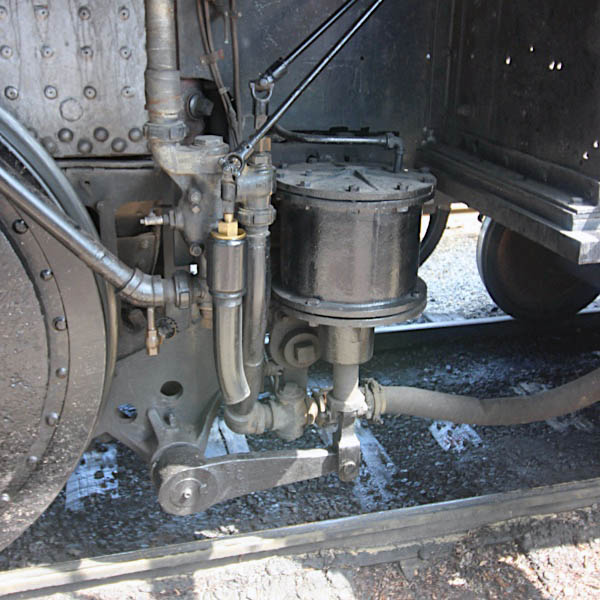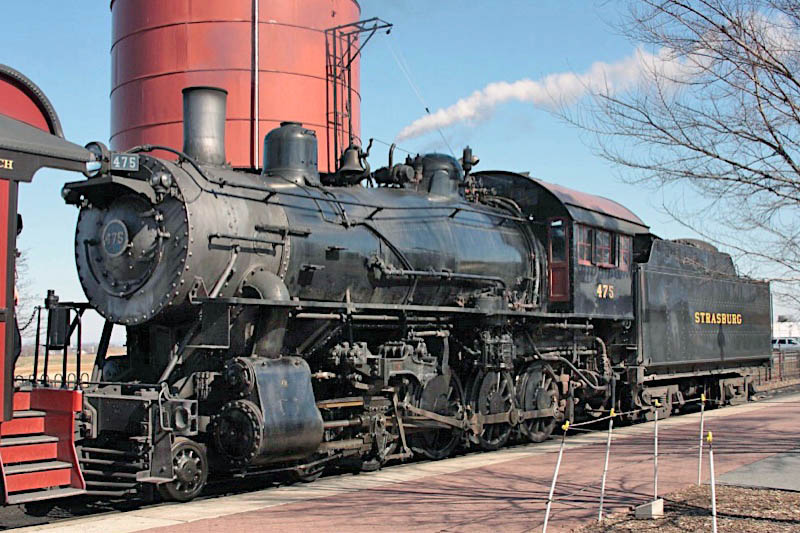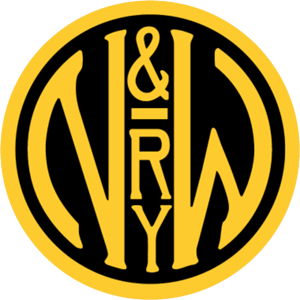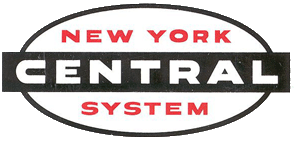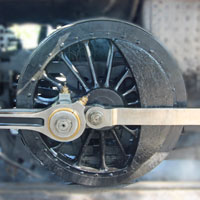 |
Strasburg Rail Road Locomotives |

Strasburg, Pa / Jul 2020 / RWH
 he Strasburg Rail Road currently rosters four operating steam locomotives: former Great Western "Decapod" #90, former Canadian National "Mogul" #89, former Norfolk & Western "Mollie" #475, and former Brooklyn Eastern District Terminal #15 (rebuilt as Thomas the Tank Engine). The Strasburg is one of the few railroads in the United States to occasionally use steam locomotives to haul revenue freight trains.
he Strasburg Rail Road currently rosters four operating steam locomotives: former Great Western "Decapod" #90, former Canadian National "Mogul" #89, former Norfolk & Western "Mollie" #475, and former Brooklyn Eastern District Terminal #15 (rebuilt as Thomas the Tank Engine). The Strasburg is one of the few railroads in the United States to occasionally use steam locomotives to haul revenue freight trains.
Steam Motive Power
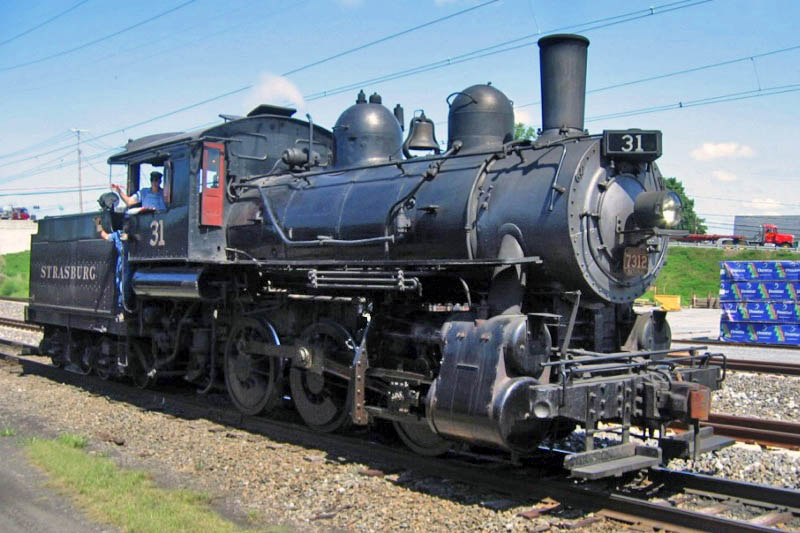
Strasburg #31
Paradise, Pa / Aug 2007 / Jonathan Ferraro


Strasburg #31
to Strasburg Rail Road #31
under restoration
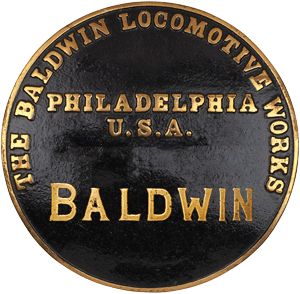
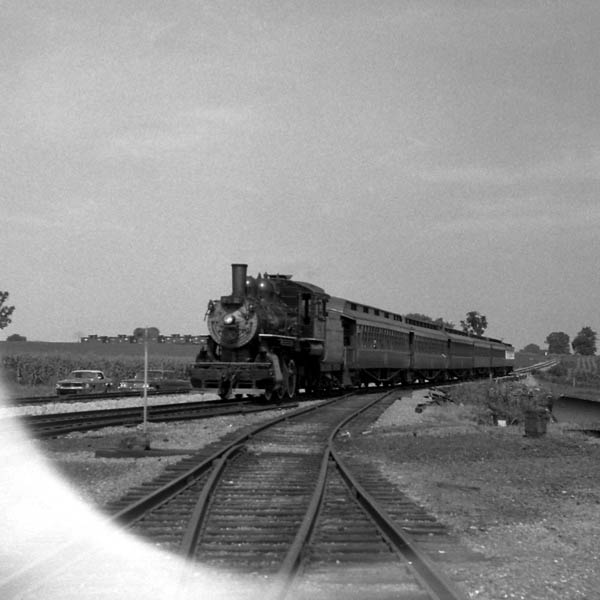
Strasburg, Pa / Aug 1971 / JCH
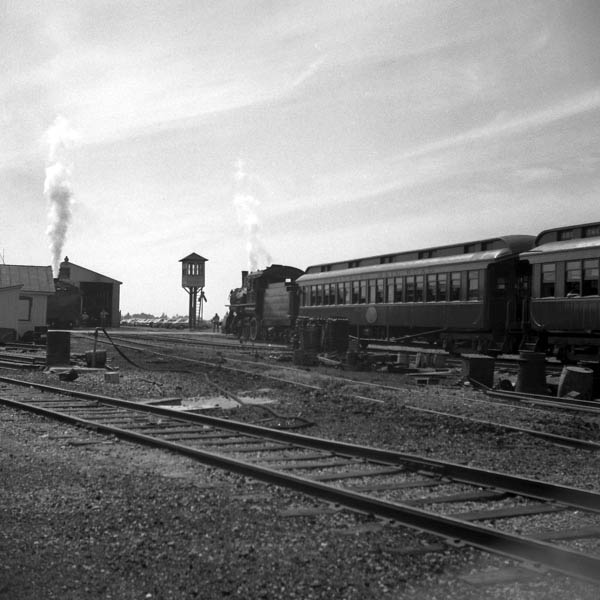
Strasburg, Pa / Aug 1971 / JCH
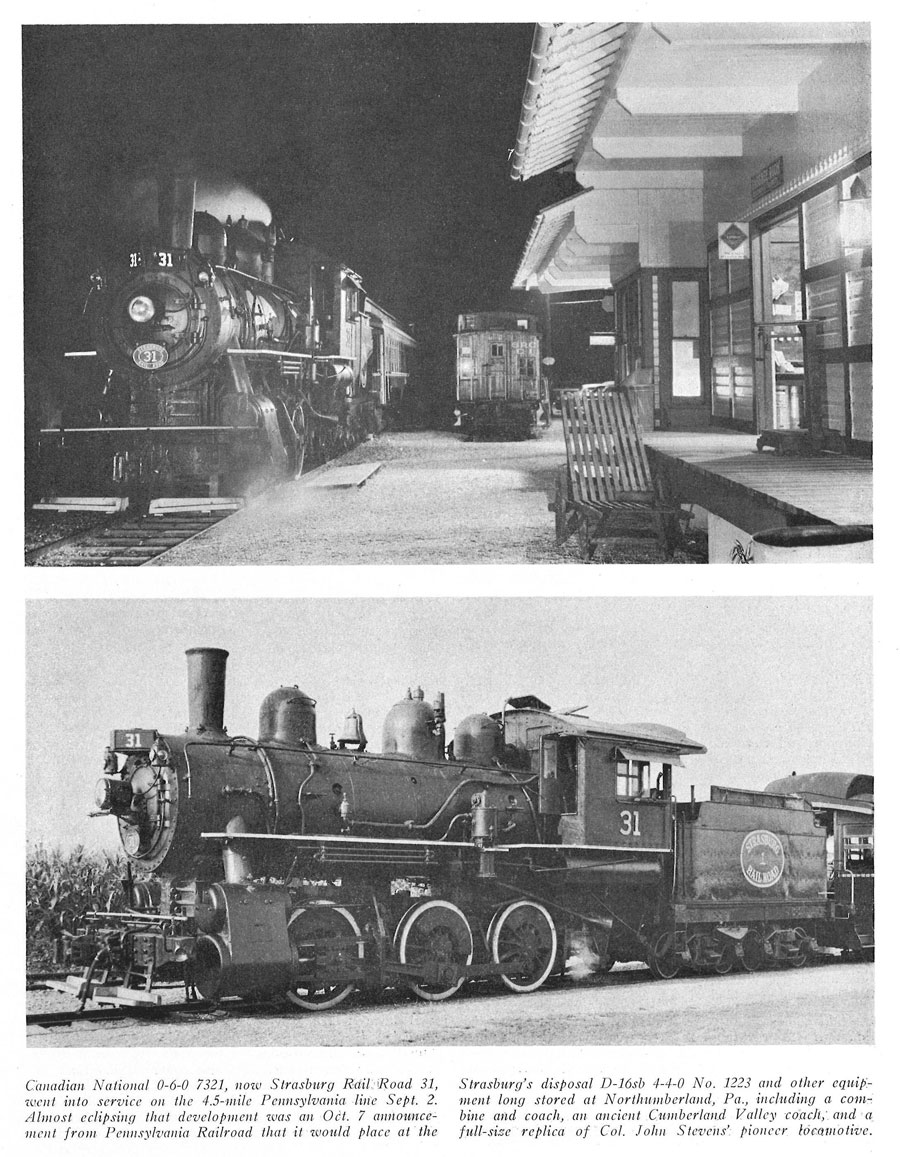
from Steam Locomotive & Railroad Tradition
#6 / Dec 1960 / collection
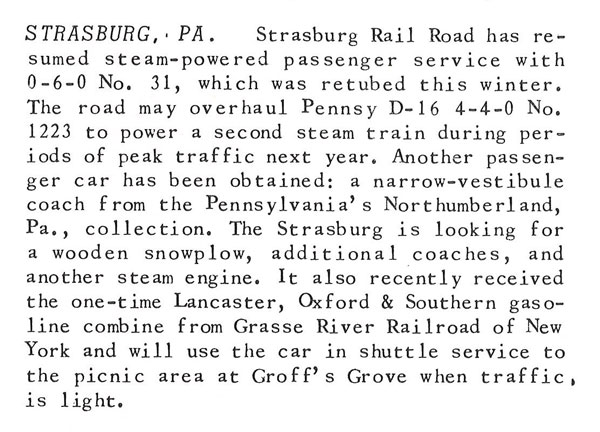
from Steam Locomotive & Railroad Tradition
#11 / May 1962 / collection

Strasburg #89
Strasburg, Pa / Jul 2020 / RWH


Strasburg #89
to Canadian National #911
to Steamtown @ Bellows Falls, Vt
to Strasburg Rail Road #89
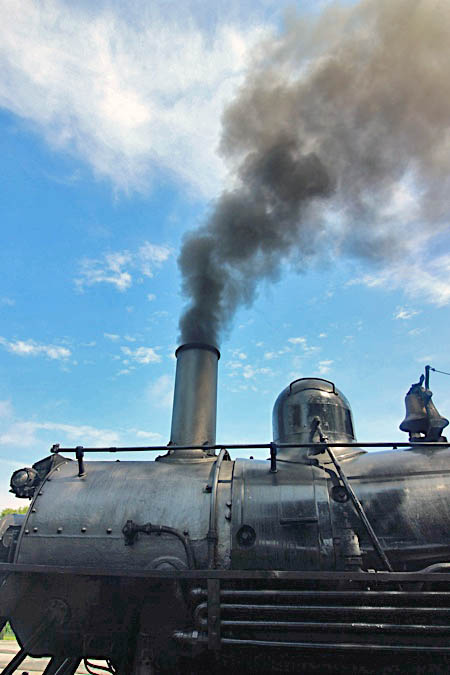
Jul 2020 / RWH
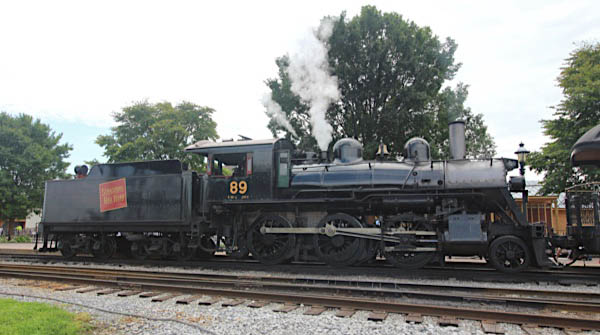
Strasburg, Pa / Jul 2020 / RWH

Strasburg, Pa / Jul 2020 / RWH
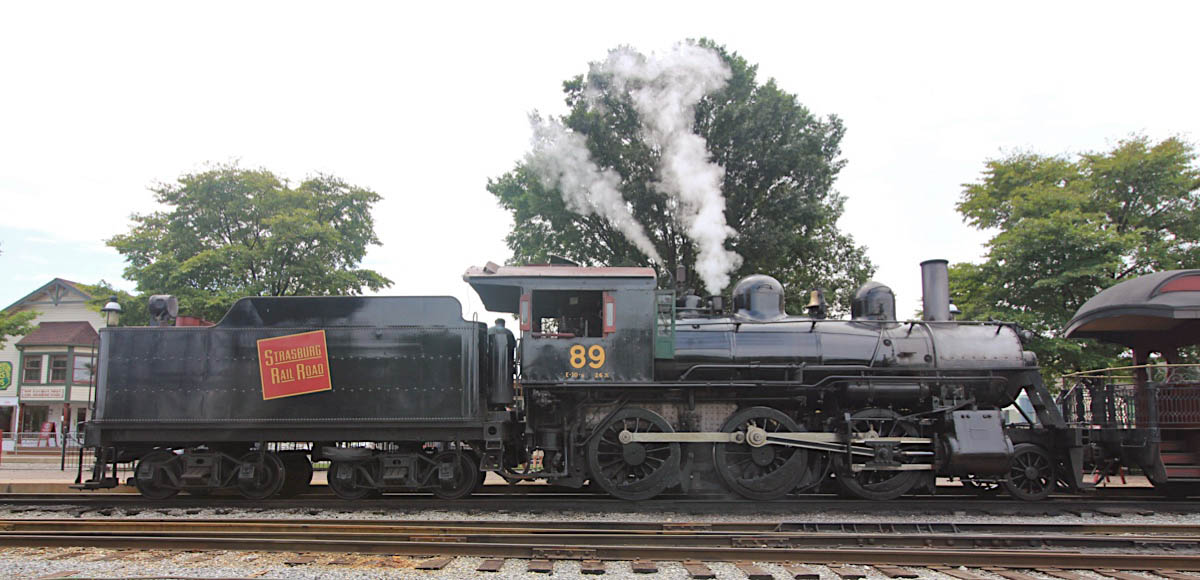
Strasburg, Pa / Jul 2020 / RWH

Strasburg, Pa / Jul 2020 / RWH

Strasburg, Pa / Jul 2020 / RWH
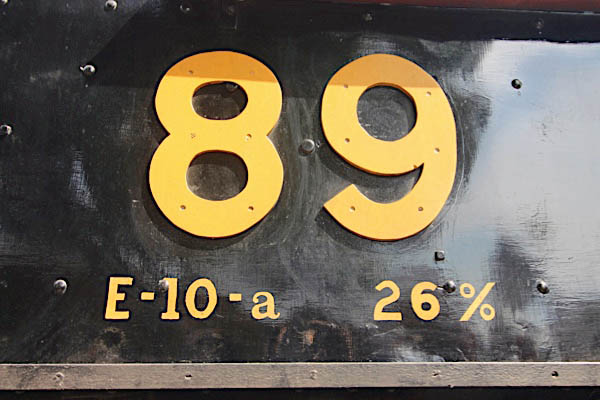
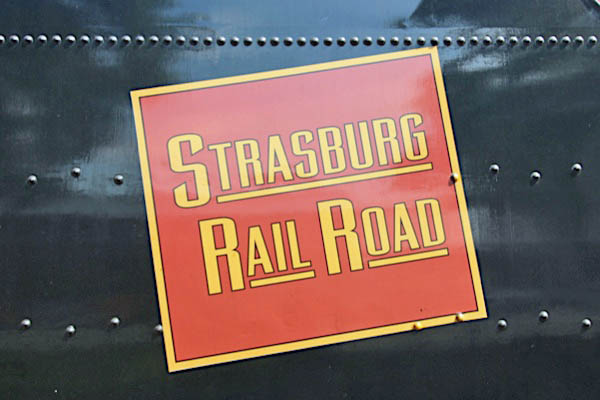

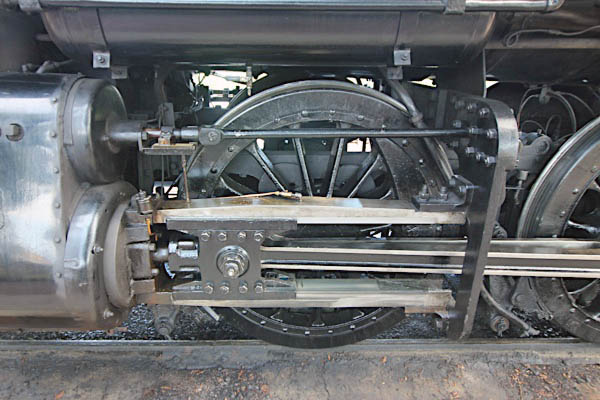

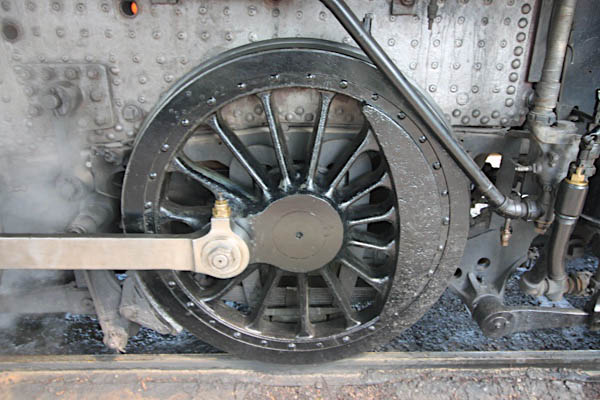
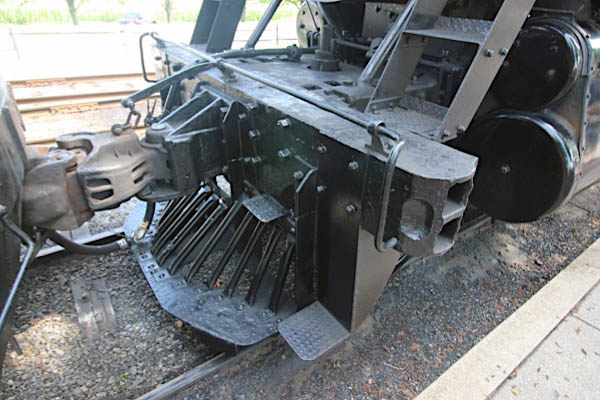

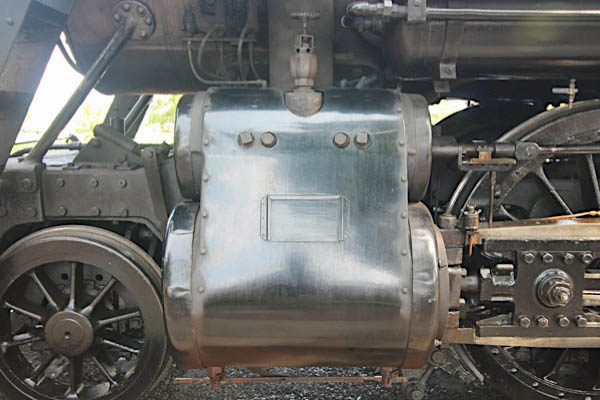
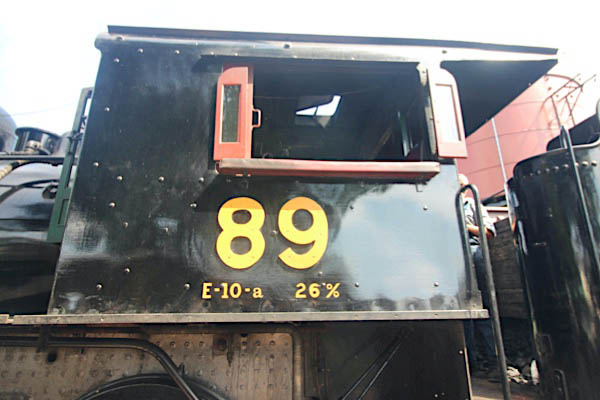

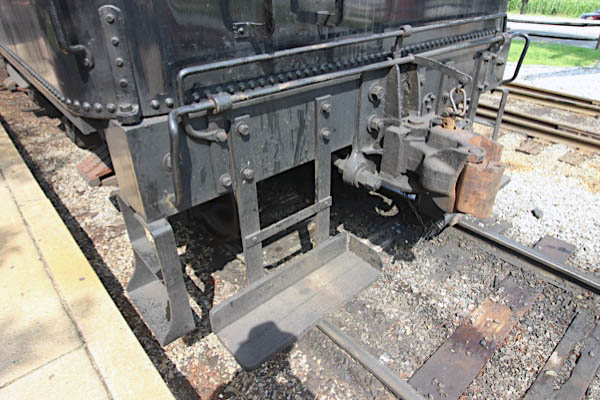
Jul 2020 / RWH

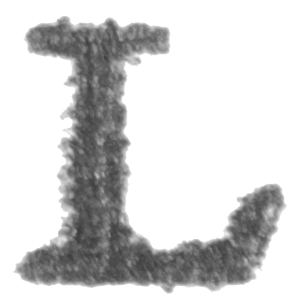 ocomotive No. 89 ran on the Canadian National Railway for most of her life before being sold to the Green Mountain Railroad in New Hampshire. After just a few years on the Green Mountain RR, the locomotive was sold to the Strasburg Rail Road in late Spring 1972. The harrowing experience battling Hurricane Agnes’ flood waters during her journey to Strasburg is chronicled in Images of Rail: Strasburg Rail Road. Today, No. 89 is still an active locomotive at Strasburg and is often the locomotive of choice to pull smaller train consists.
ocomotive No. 89 ran on the Canadian National Railway for most of her life before being sold to the Green Mountain Railroad in New Hampshire. After just a few years on the Green Mountain RR, the locomotive was sold to the Strasburg Rail Road in late Spring 1972. The harrowing experience battling Hurricane Agnes’ flood waters during her journey to Strasburg is chronicled in Images of Rail: Strasburg Rail Road. Today, No. 89 is still an active locomotive at Strasburg and is often the locomotive of choice to pull smaller train consists.
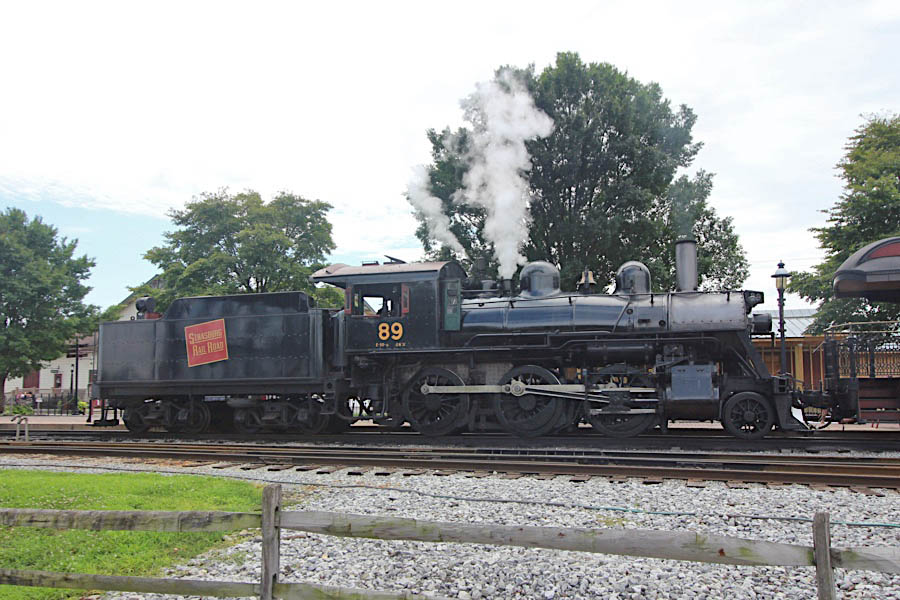
Strasburg, Pa / Jul 2020 / RWH
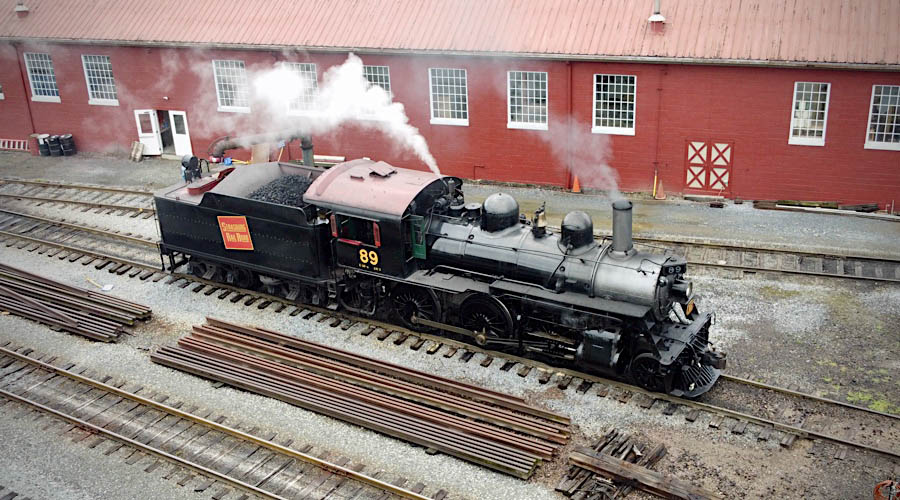
Strasburg, Pa / Jul 2020 / RWH

Strasburg, Pa / Jul 2020 / RWH
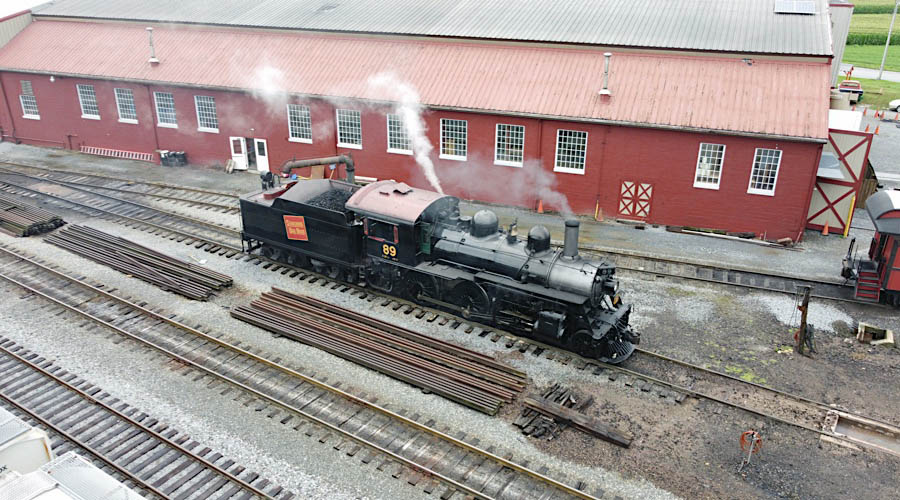
Strasburg, Pa / Jul 2020 / RWH
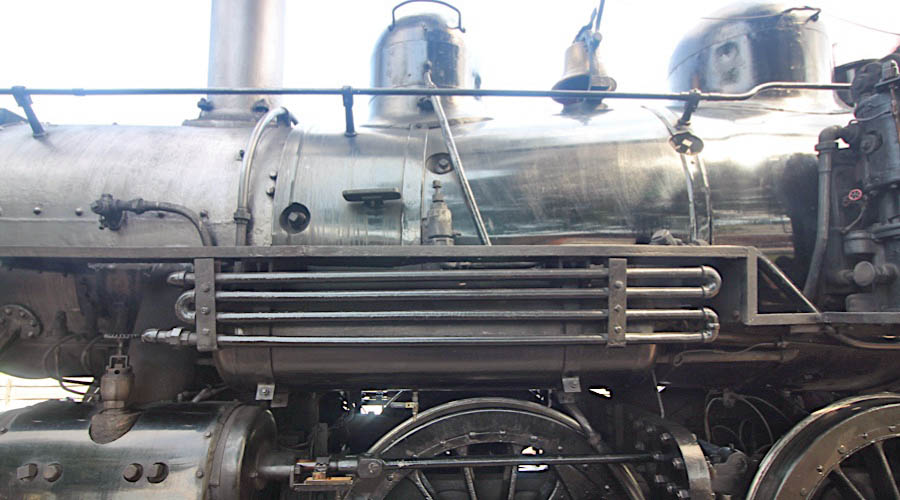
Jul 2020 / RWH


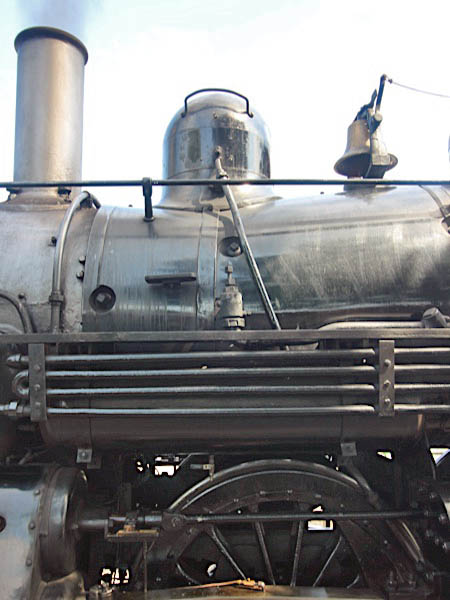
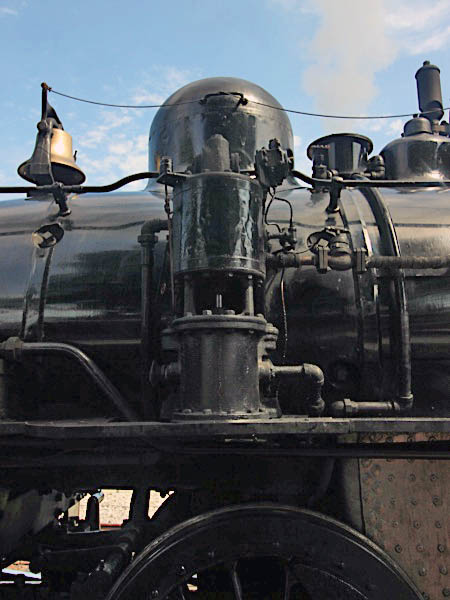

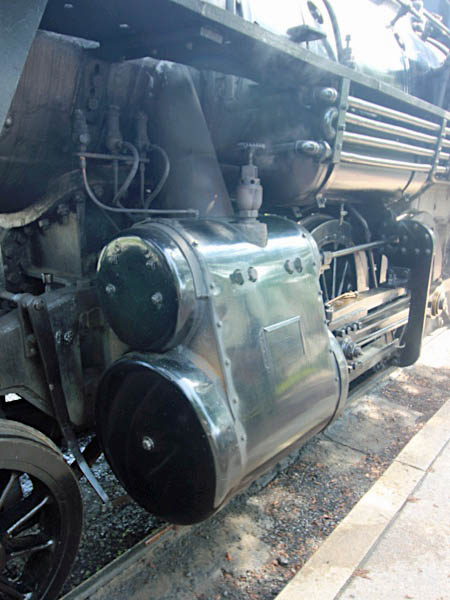
Jul 2020 / RWH
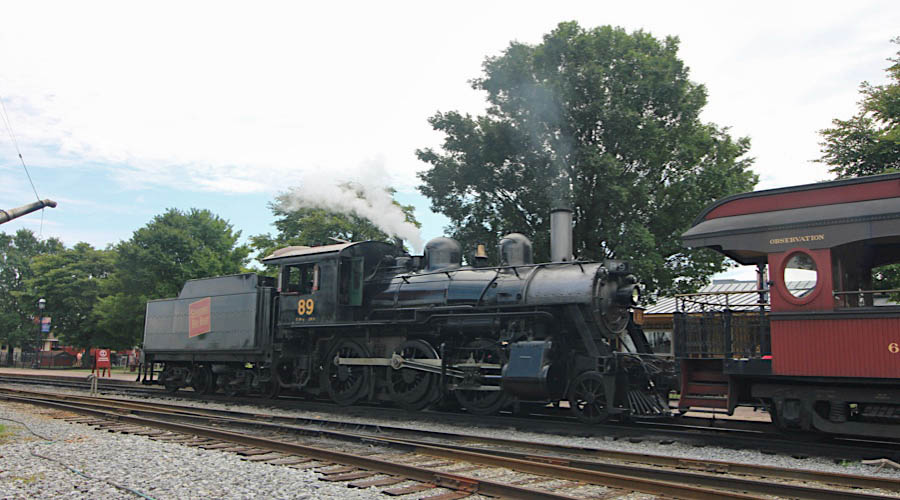
Strasburg, Pa / Jul 2020 / RWH
 The Darling Decapod
The Darling Decapod
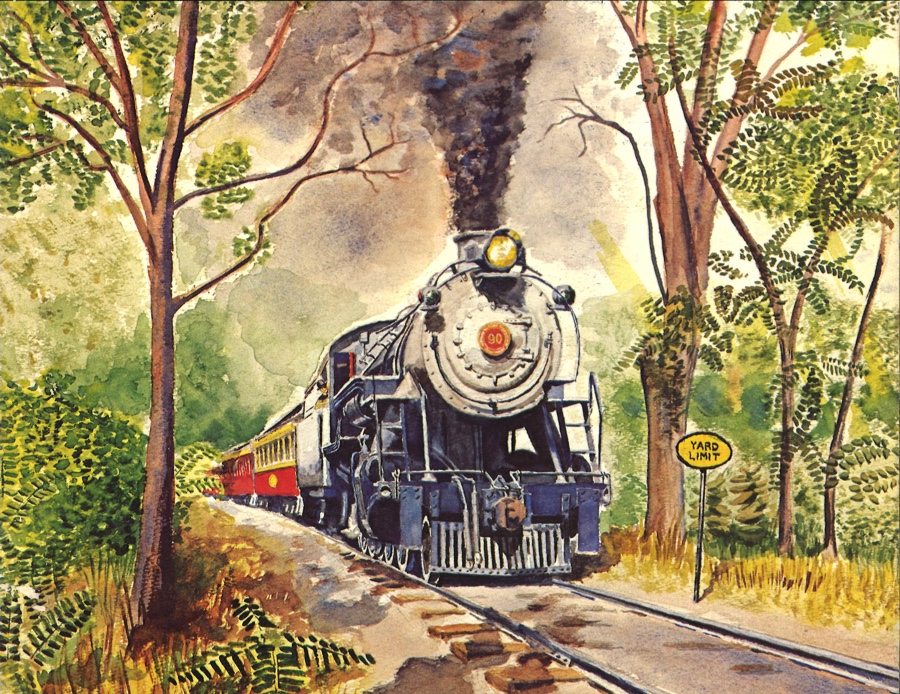
watercolor painting by Linn W. Moedinger / The Road to Paradise - 1971 / collection
 Under the Whyte notation for the classification of steam locomotives, 2-10-0 represents the wheel arrangement of two leading wheels on one axle, ten powered and coupled driving wheels on five axles, and no trailing wheels. This arrangement was often named Decapod, especially in the United States, although this name was sometimes applied to locomotives of 0-10-0 "Ten-Coupled" arrangement, particularly in the United Kingdom.
Under the Whyte notation for the classification of steam locomotives, 2-10-0 represents the wheel arrangement of two leading wheels on one axle, ten powered and coupled driving wheels on five axles, and no trailing wheels. This arrangement was often named Decapod, especially in the United States, although this name was sometimes applied to locomotives of 0-10-0 "Ten-Coupled" arrangement, particularly in the United Kingdom.
These locomotives were popular in Europe, particularly in Germany and Russia; British use of the type was confined to the period during and after World War II. In the United States, the 2-10-0 was not widely popular but was a favorite of a small number of railroads which operated mostly in mountainous terrain.
The 2-10-0's main advantage was that five out of six of its axles were powered, meaning almost all the weight was available for traction rather than being distributed over pilot and trailing wheels. The long rigid wheelbase caused problems on tightly curved track, so blind drivers were the norm, either on the central axle, and/or on the second and/or fourth axles. Often lateral motion devices were attached to the leading drive axle.

Strasburg #90
Strasburg, Pa / Feb 2006 / Charlie O'Hay


Strasburg #90
to Strasburg Rail Road #90

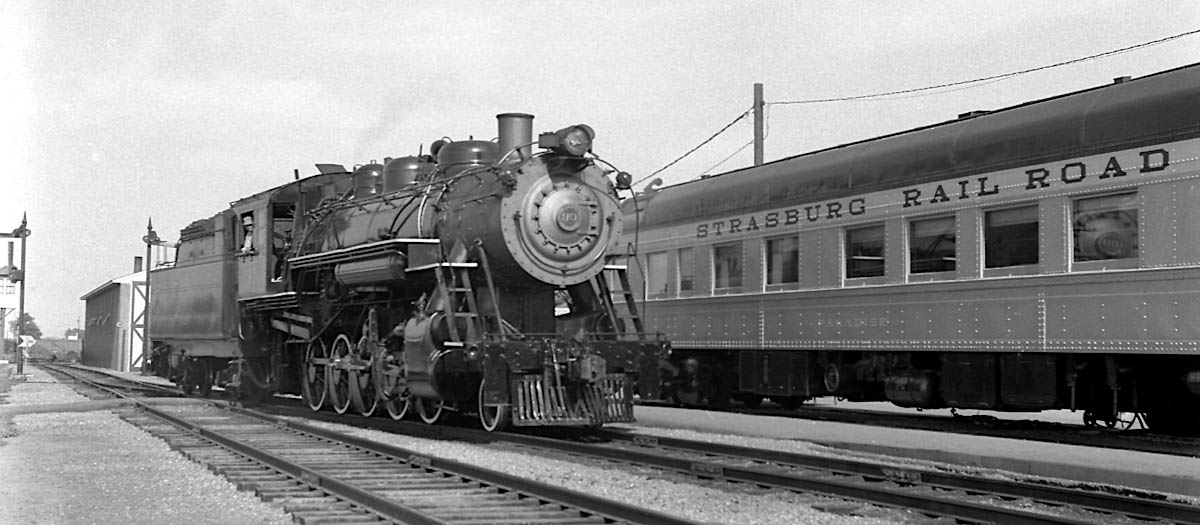
Strasburg, Pa / Aug 1971 / JCH
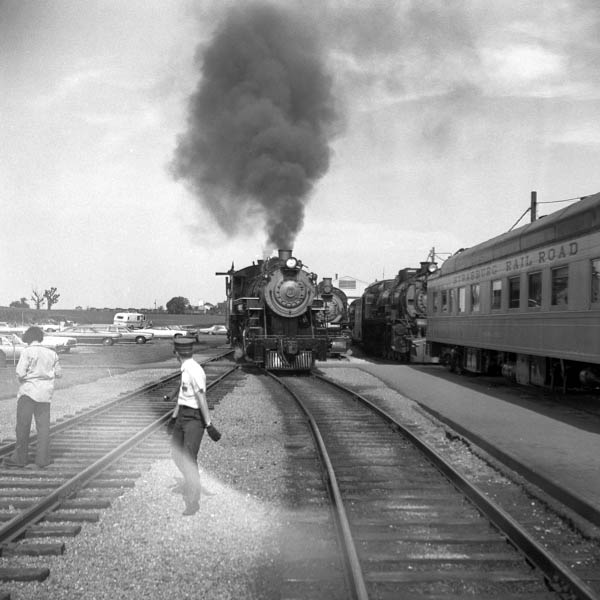
Strasburg, Pa / Aug 1971 / JCH

Paradise, Pa / Aug 1971 / JCH

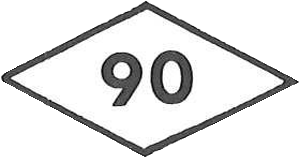
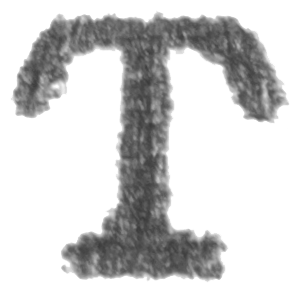 he 90 was one of two locomotives built to this [stock Baldwin light decapod] specification (the other being Osage Railway's #10) that did not head South from Baldwin. Instead, the Colorado-based Great Western Sugar Company used her to haul 40-50 car trains of sugar beets to factories in Longmont, Loveland, Windsor, Johnstown, and Eaton. After more than 40 years of service, the GWR sold the 90 to the 4.5-mile (7.25 km) long Strasburg Rail Road in 1967 for a reported $50,000. Well after 2010, the 90 remained in regular service on this Pennsylvania museum railroad.
he 90 was one of two locomotives built to this [stock Baldwin light decapod] specification (the other being Osage Railway's #10) that did not head South from Baldwin. Instead, the Colorado-based Great Western Sugar Company used her to haul 40-50 car trains of sugar beets to factories in Longmont, Loveland, Windsor, Johnstown, and Eaton. After more than 40 years of service, the GWR sold the 90 to the 4.5-mile (7.25 km) long Strasburg Rail Road in 1967 for a reported $50,000. Well after 2010, the 90 remained in regular service on this Pennsylvania museum railroad.
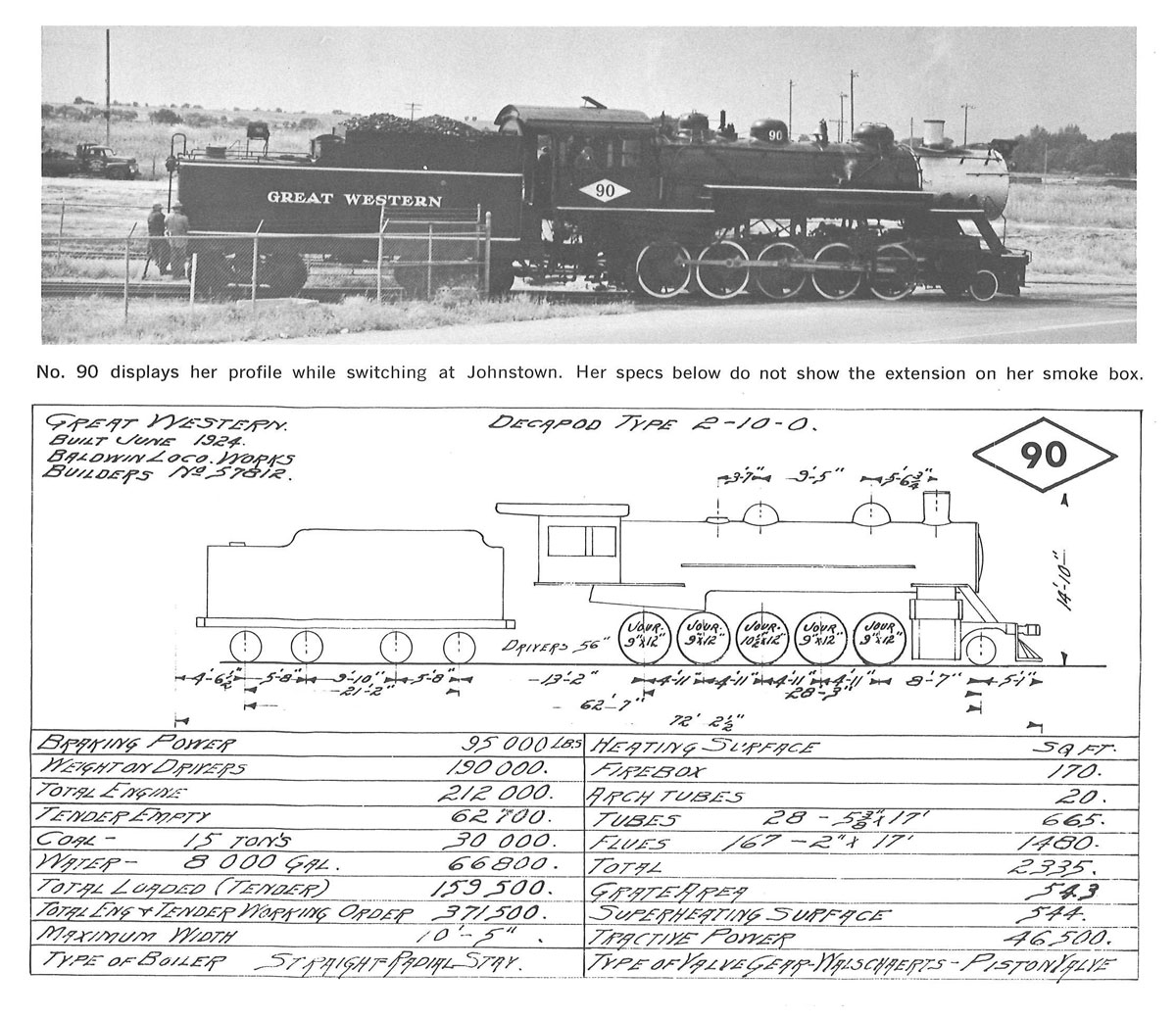
from Where Steam Still Serves: The Great Western Railway
- 1961 / collection
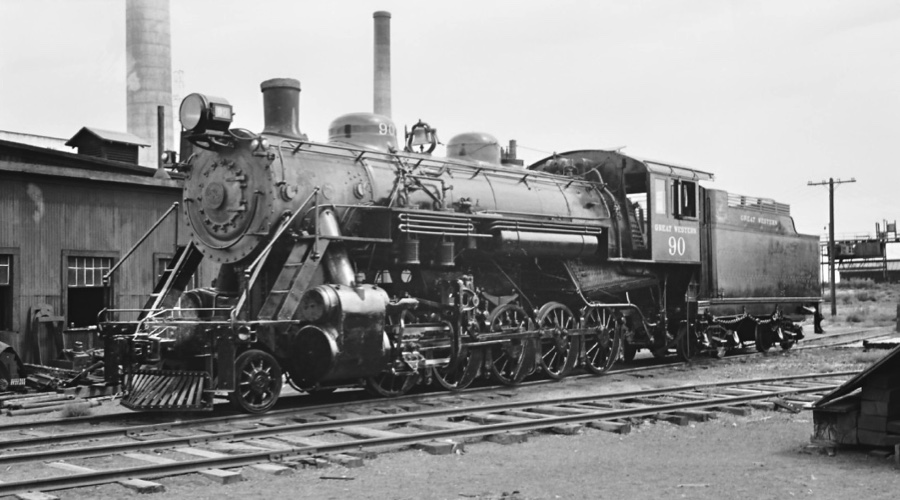
Great Western #90
SteamLocomotive.com
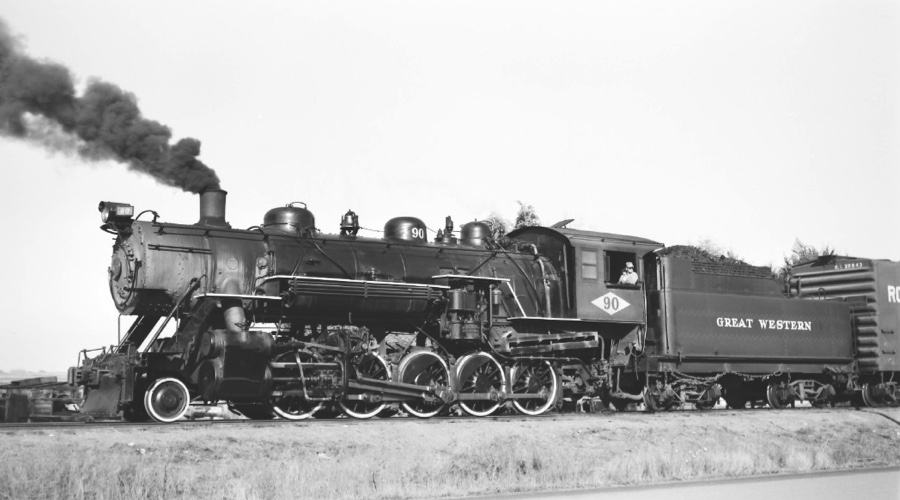
SteamLocomotive.com
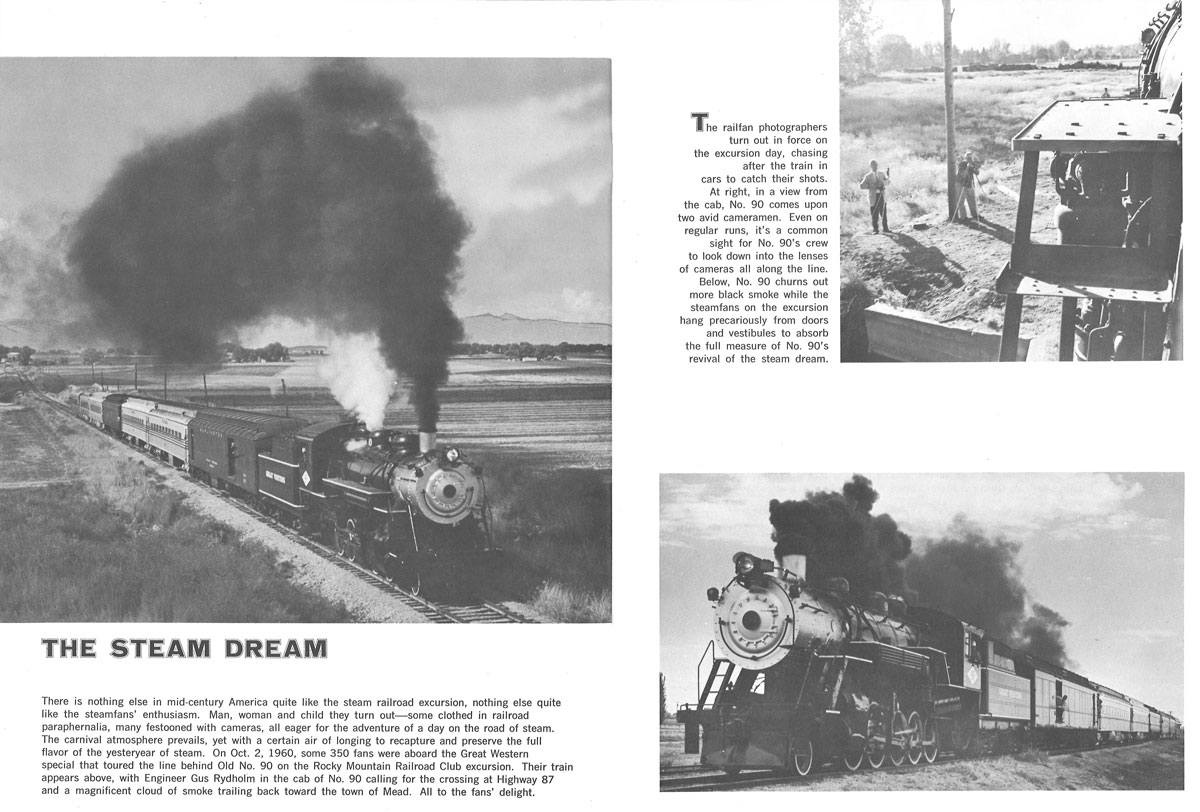
from Where Steam Still Serves: The Great Western Railway
- 1961 / collection
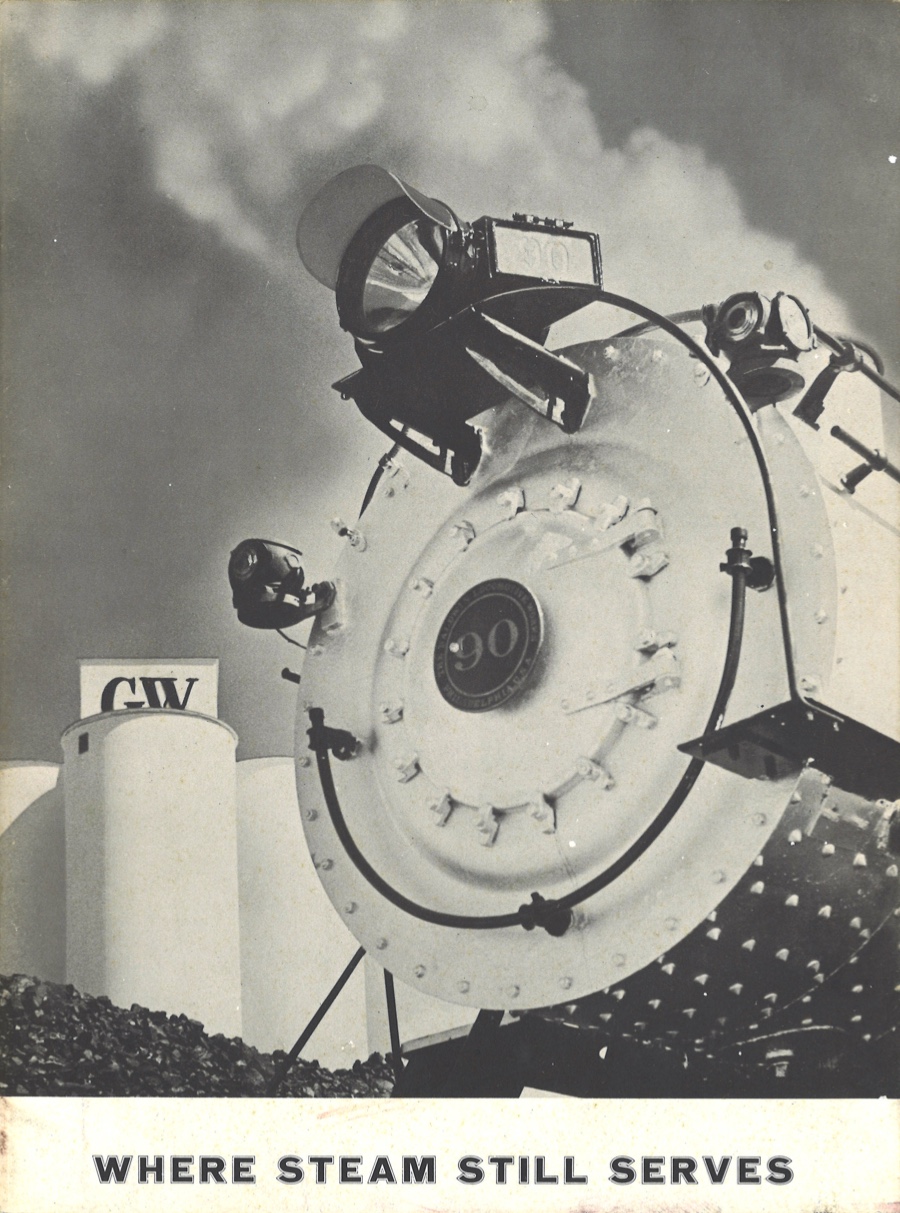
collection
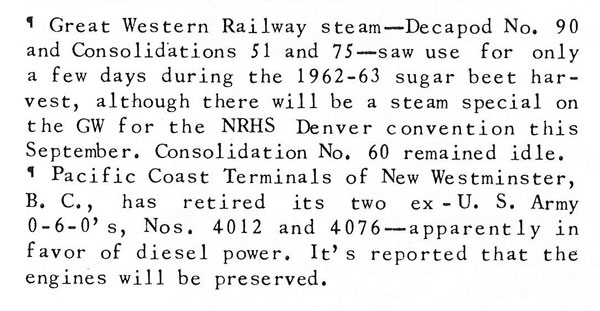
from Steam Locomotive & Railroad Tradition
#13 / May 1963 / collection


collection

from Railroading
#23 / May 1968 / collection
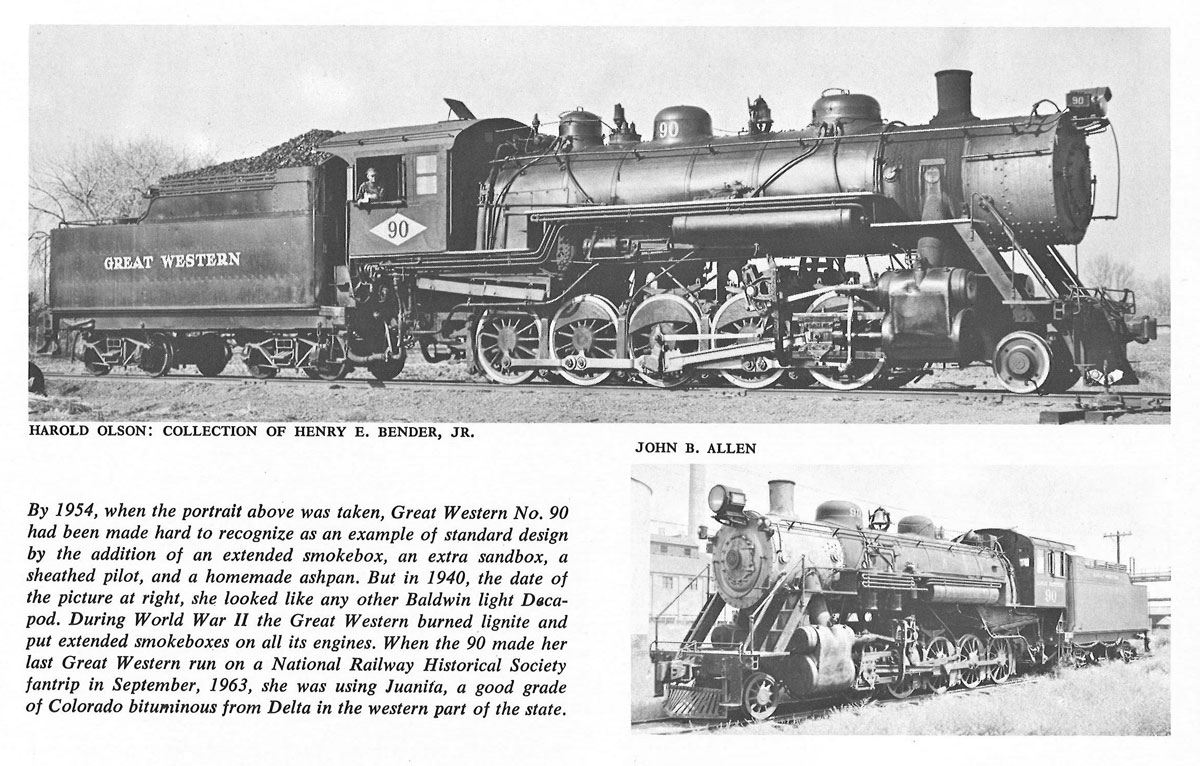
from Railroading
#23 / May 1968 / collection

from Railroading
#23 / May 1968 / collection
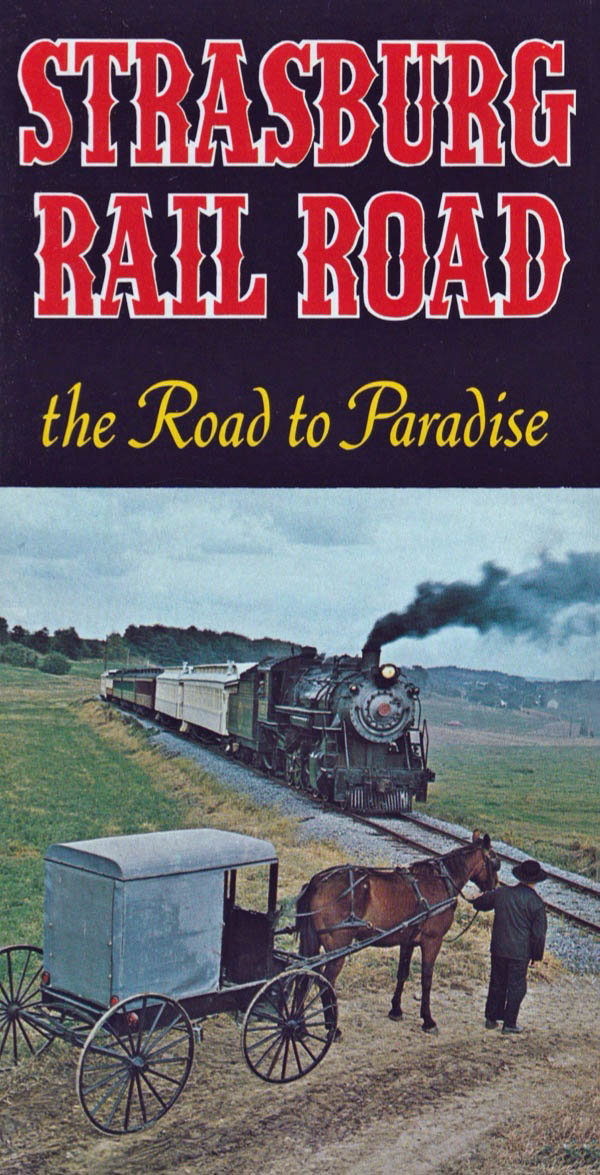
collection
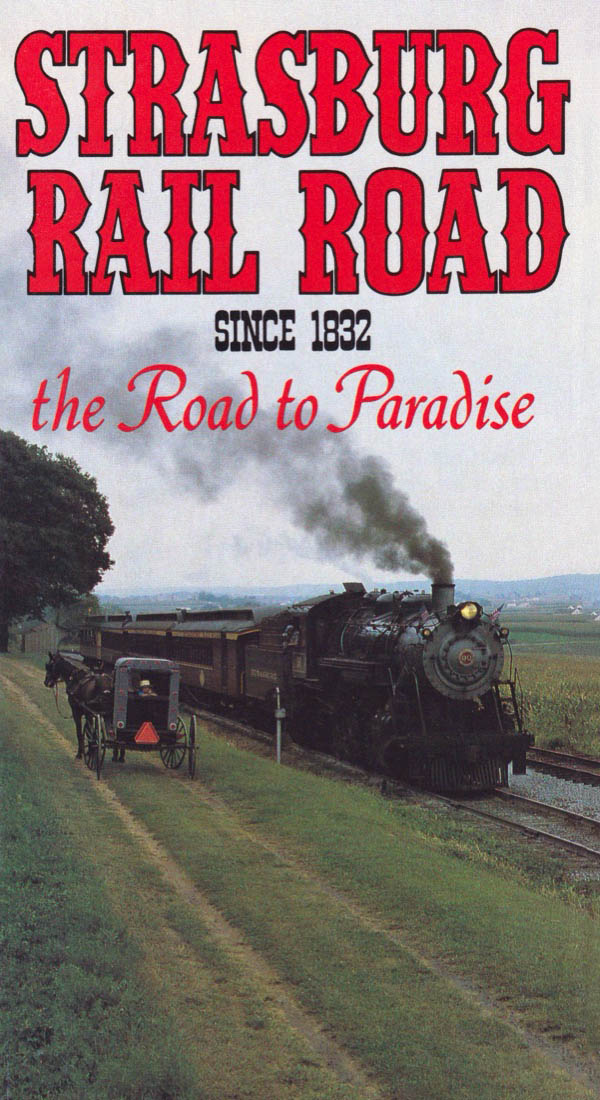
collection

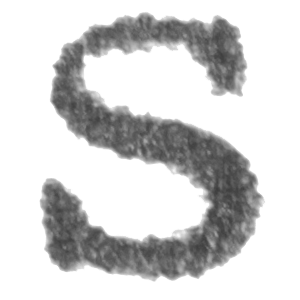 trasburg's most recent motive power acquisition is Baldwin-built number 90, purchased three years ago from the Great Western Railway of northeastern Colorado. Outshopped in 1924, it is an out-and-out freight locomotive whose first forty years were spent trundling long, heavy trains of sugar beets to the company's towering mill in Loveland, Colorado. It is the last operating Decapod in the United States. Its 2-10-0 wheel arrangement, from which it gets its name, is immediately suggestive of the power associated with the era of steam propulsion. Number 90's presence on the Strasburg serves to exemplify the independent and nonconformist spirit of the typical American short line railroad. The annals of American railroading attest to the fact that only a short line would have the audacity to assign an engine such as number 90 to the head end of a passenger consist. As a corporation owned, managed and operated by individualists, the Strasburg Rail Road has just that audacity.
trasburg's most recent motive power acquisition is Baldwin-built number 90, purchased three years ago from the Great Western Railway of northeastern Colorado. Outshopped in 1924, it is an out-and-out freight locomotive whose first forty years were spent trundling long, heavy trains of sugar beets to the company's towering mill in Loveland, Colorado. It is the last operating Decapod in the United States. Its 2-10-0 wheel arrangement, from which it gets its name, is immediately suggestive of the power associated with the era of steam propulsion. Number 90's presence on the Strasburg serves to exemplify the independent and nonconformist spirit of the typical American short line railroad. The annals of American railroading attest to the fact that only a short line would have the audacity to assign an engine such as number 90 to the head end of a passenger consist. As a corporation owned, managed and operated by individualists, the Strasburg Rail Road has just that audacity.
William M. Moedinger - The Road to Paradise - 1971
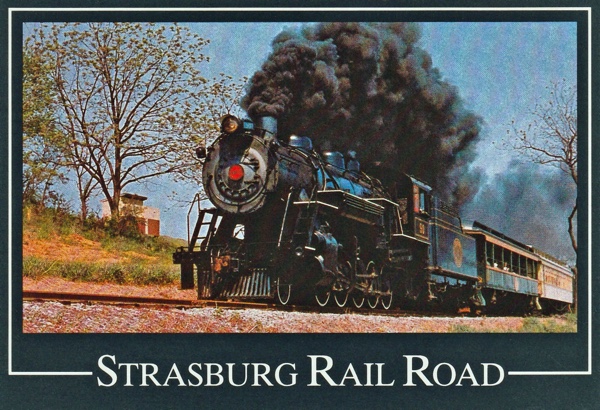
postcard / collection
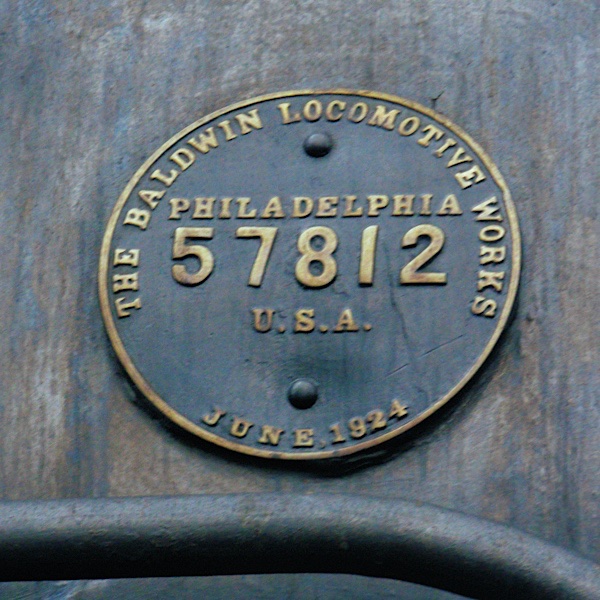
web
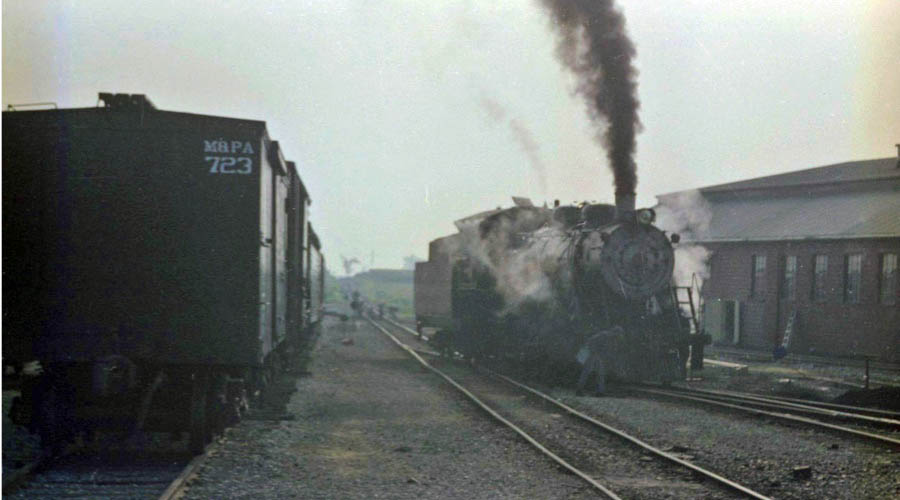
Strasburg, Pa / Aug 1994 / RWH
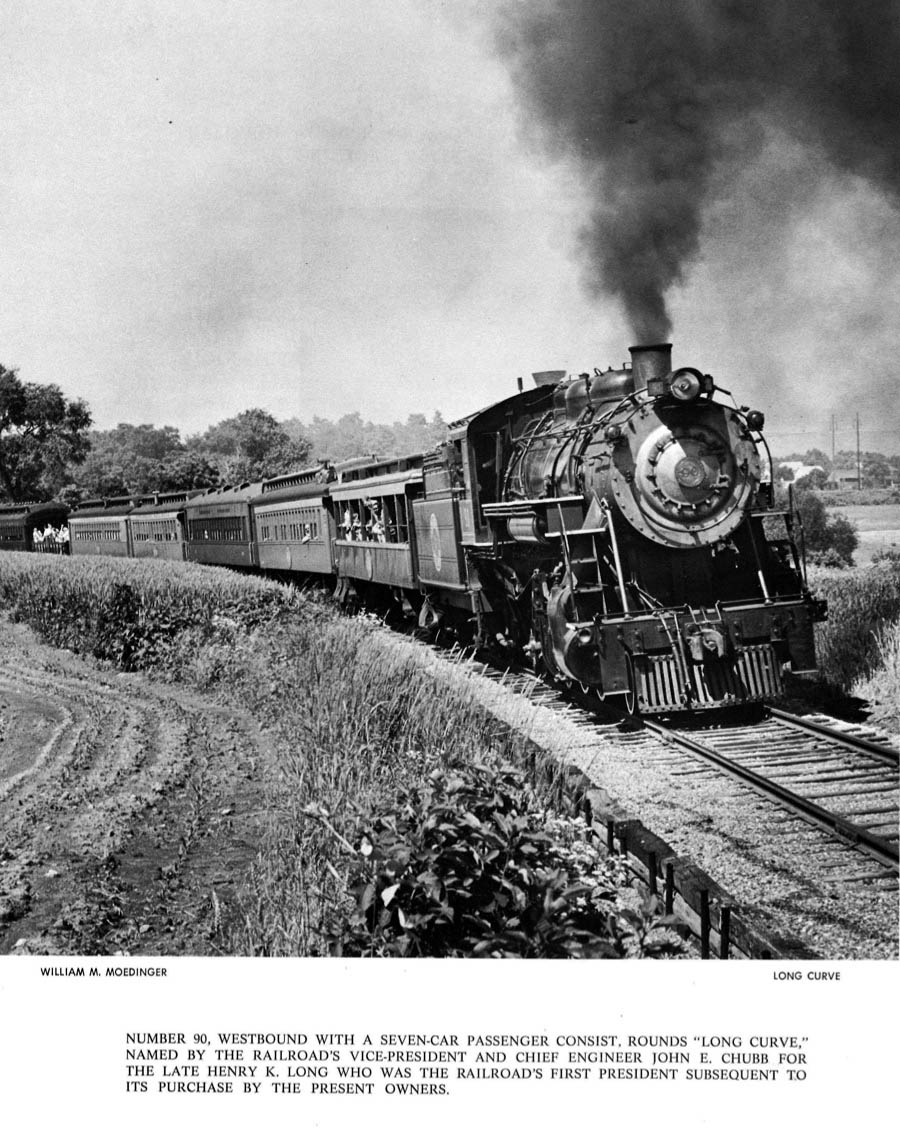
from The Road to Paradise
- 1971 / collection
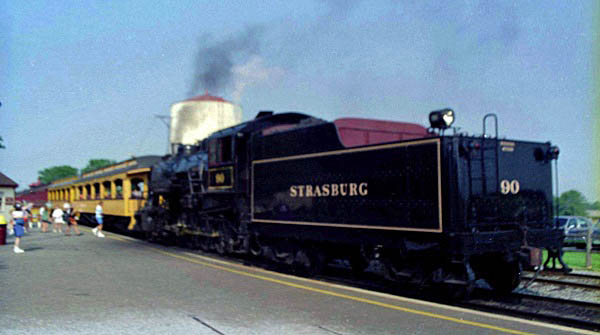
Strasburg, Pa / Aug 1994 / JCH
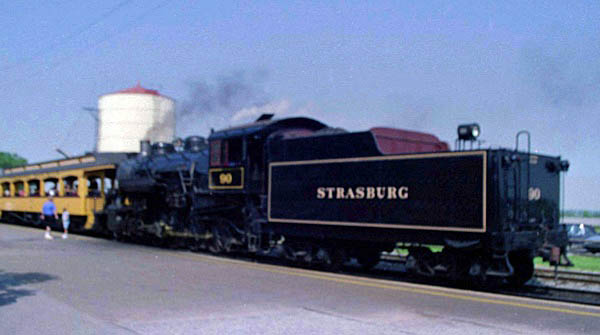
Strasburg, Pa / Aug 1994 / JCH
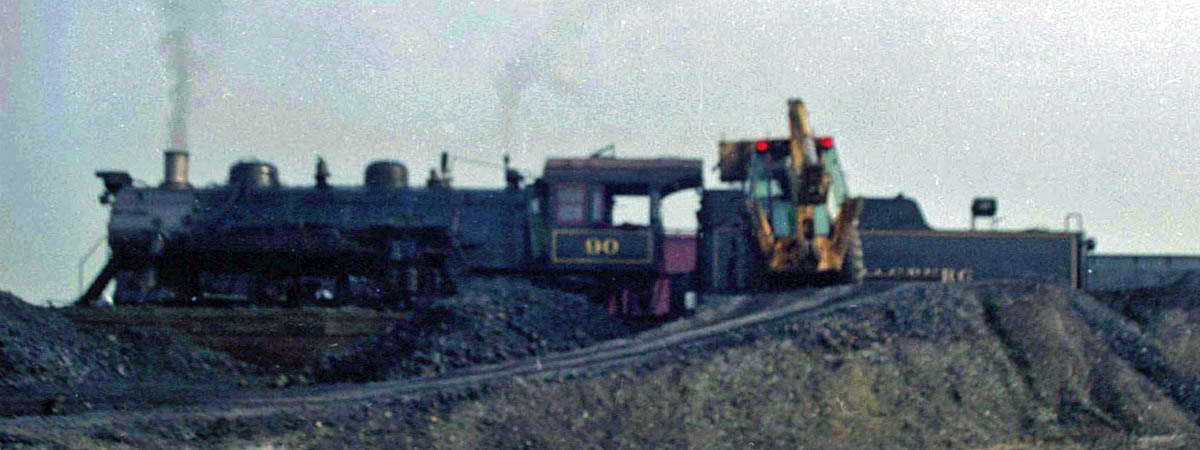
Strasburg, Pa / Aug 1994 / JCH
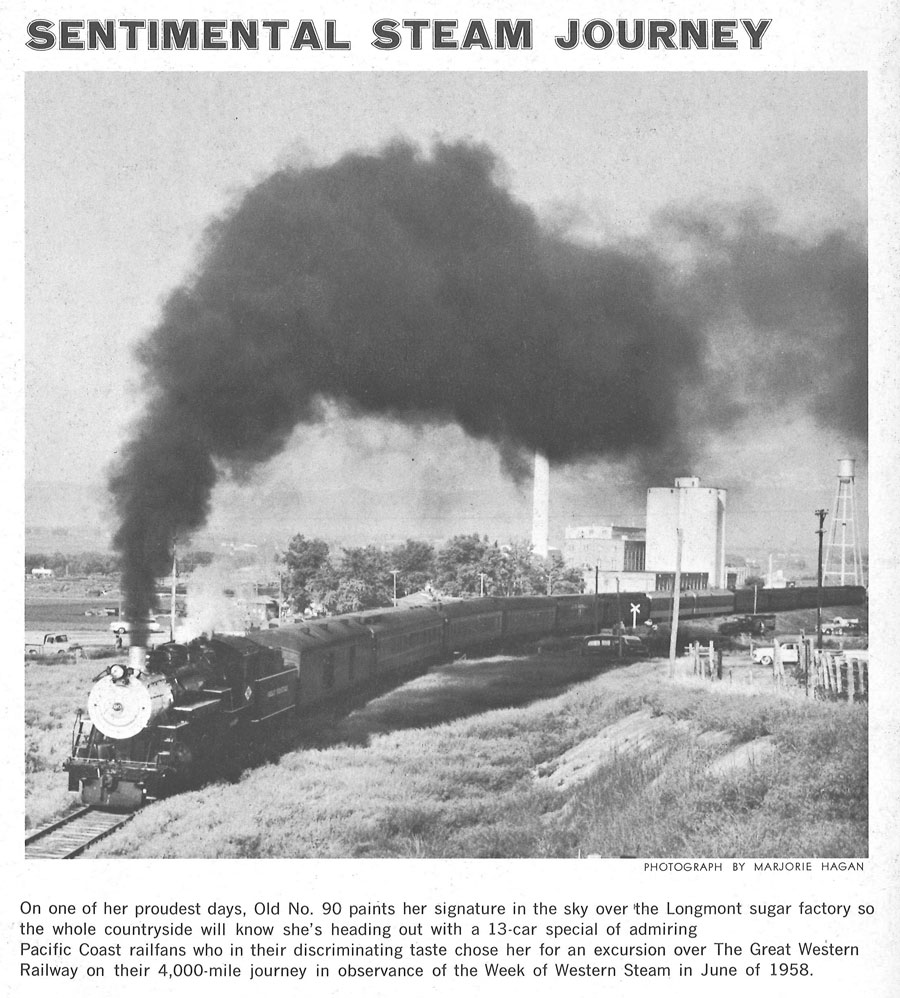
from Where Steam Still Serves: The Great Western Railway
- 1961 / collection

 ocomotive No. 90 has become an iconic symbol of the Strasburg Rail Road. While she may be the youngest steam locomotive on the roster, she is the largest, and to some, she reigns as the grande dame of Strasburg’s fleet of steam locomotives. Built in June of 1924 for the Great Western Railroad by Baldwin Locomotive Works of Philadelphia, No. 90 is one of just two operational Decapod class (2-10-0 wheel configuration) locomotives remaining in America! After spending 40 years of hauling commodities—primarily sugar beets—through the mountains of northern Colorado, she was sold to the Strasburg Rail Road in 1967 for a grand total of just $23,000. As soon as No. 90 arrived in Strasburg over 50 years ago, she instantly became a fan favorite and remains so even today.
ocomotive No. 90 has become an iconic symbol of the Strasburg Rail Road. While she may be the youngest steam locomotive on the roster, she is the largest, and to some, she reigns as the grande dame of Strasburg’s fleet of steam locomotives. Built in June of 1924 for the Great Western Railroad by Baldwin Locomotive Works of Philadelphia, No. 90 is one of just two operational Decapod class (2-10-0 wheel configuration) locomotives remaining in America! After spending 40 years of hauling commodities—primarily sugar beets—through the mountains of northern Colorado, she was sold to the Strasburg Rail Road in 1967 for a grand total of just $23,000. As soon as No. 90 arrived in Strasburg over 50 years ago, she instantly became a fan favorite and remains so even today.


Strasburg #475
to Illinois Railway Museum
to Boone & Scenic Valley
to Strasburg Rail Road
only operating 4-8-0 in United States


Strasburg, Pa / Aug 1994 / JCH
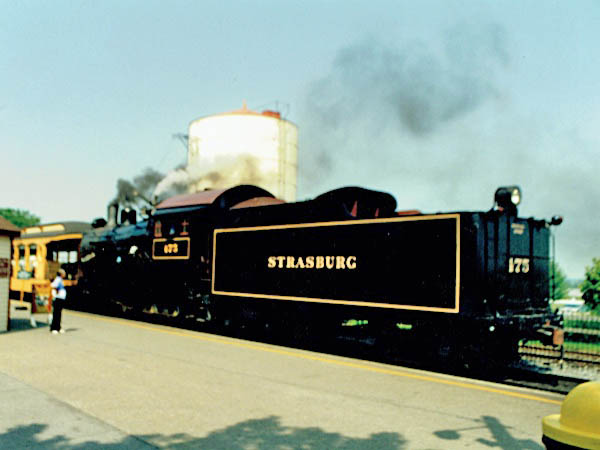
Strasburg, Pa / Aug 1994 / JCH
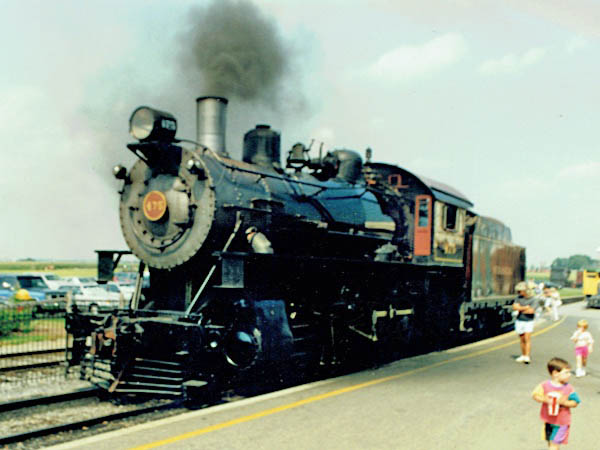
Strasburg, Pa / Aug 1994 / JCH
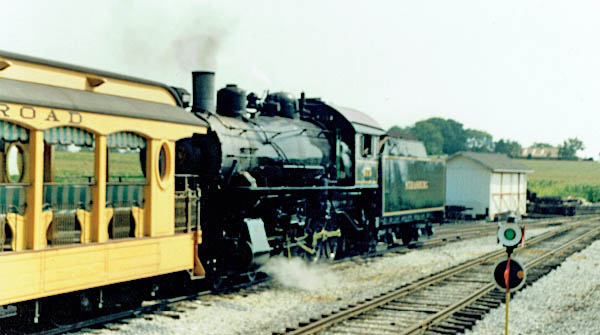
Strasburg, Pa / Aug 1994 / JCH
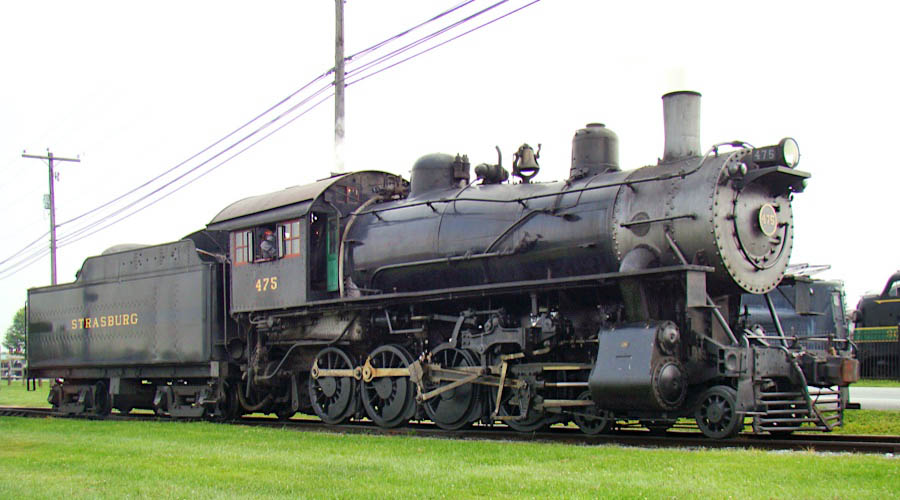
Strasburg, Pa / 2007 / collection
HawkinsRails thanks railfan buddy Gragg Robinson for sharing his Strasburg #475 images

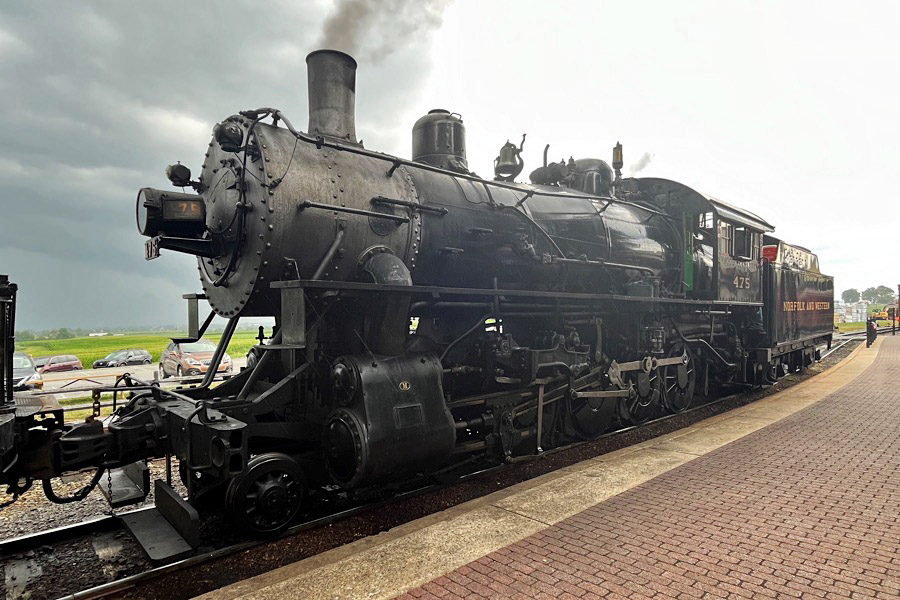
Strasburg, Pa / Jul 2024 / Gragg Robinson
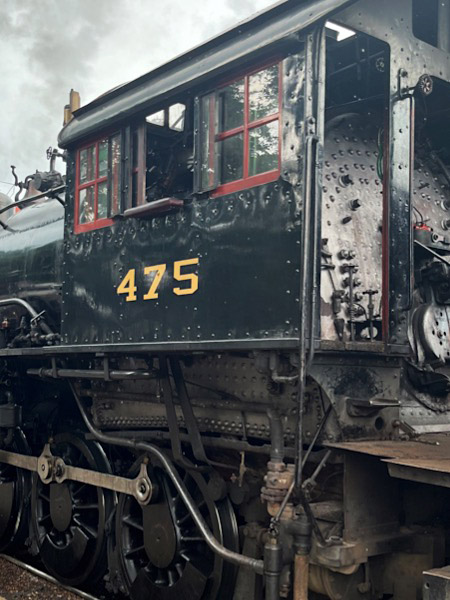
details

Jul 2024 / Gragg Robinson

Strasburg, Pa / Jul 2024 / Gragg Robinson
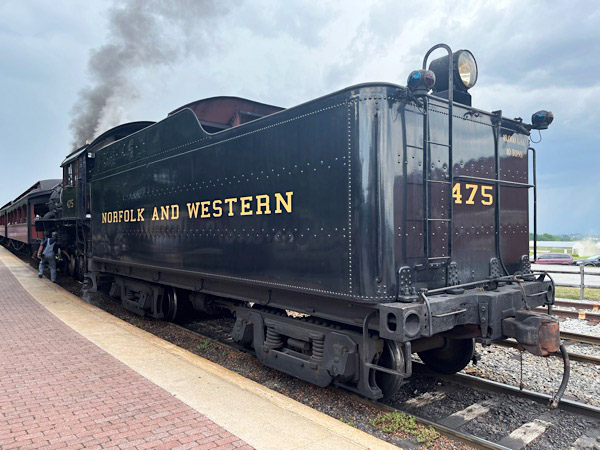
Strasburg, Pa / Jul 2024 / Gragg Robinson
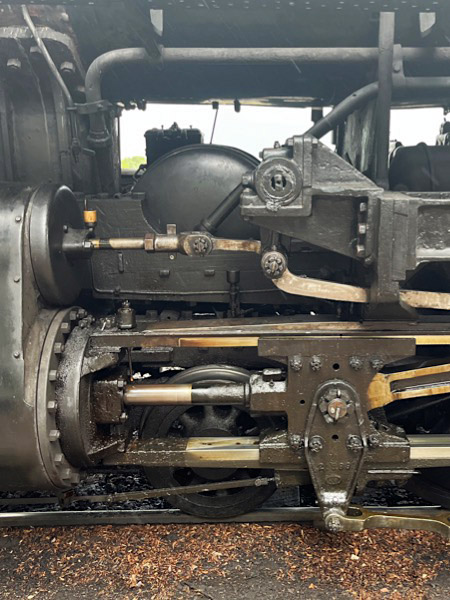
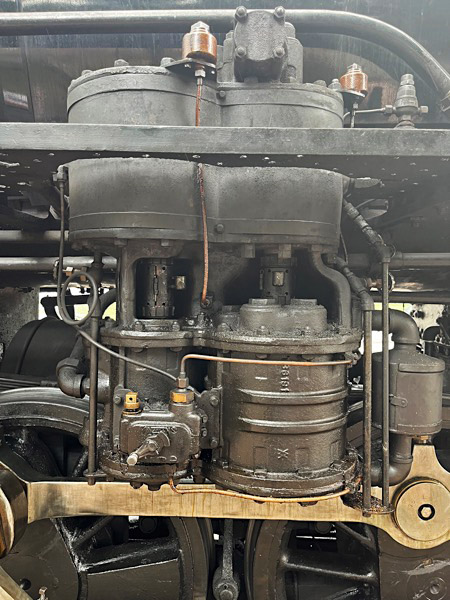

Jul 2024 / Gragg Robinson


 uilt by the Baldwin Locomotive Works of Philadelphia in June of 1906 and run on the Norfolk & Western Railroad as a mixed use engine until 1962, No. 475 is Strasburg Rail Road’s oldest and second largest steam locomotive. No. 475’s unusual 4-8-0 wheel configuration makes her known as an “Mastodon” or “M-Class” locomotive. She is the only 4-8-0 class locomotive currently operating in North America! She is also one of the last surviving examples of a Norfolk & Western Railroad locomotive. No. 475 arrived in Strasburg in 1991 after the railroad purchased the locomotive for a mere $100,000. After an approximate $640,000 extensive overhaul and restoration, she pulled her first passenger train on Strasburg’s line in the fall of 1993. No. 475 was made famous for her role in the movie, Thomas and the Magic Railroad. No. 475’s size and ability to pull nearly any size train makes her a “go-to” locomotive for nearly any need Strasburg may have—passenger, freight, or otherwise.
uilt by the Baldwin Locomotive Works of Philadelphia in June of 1906 and run on the Norfolk & Western Railroad as a mixed use engine until 1962, No. 475 is Strasburg Rail Road’s oldest and second largest steam locomotive. No. 475’s unusual 4-8-0 wheel configuration makes her known as an “Mastodon” or “M-Class” locomotive. She is the only 4-8-0 class locomotive currently operating in North America! She is also one of the last surviving examples of a Norfolk & Western Railroad locomotive. No. 475 arrived in Strasburg in 1991 after the railroad purchased the locomotive for a mere $100,000. After an approximate $640,000 extensive overhaul and restoration, she pulled her first passenger train on Strasburg’s line in the fall of 1993. No. 475 was made famous for her role in the movie, Thomas and the Magic Railroad. No. 475’s size and ability to pull nearly any size train makes her a “go-to” locomotive for nearly any need Strasburg may have—passenger, freight, or otherwise.
image Strasburg, Pa / Oct 2008 / Adam Christman
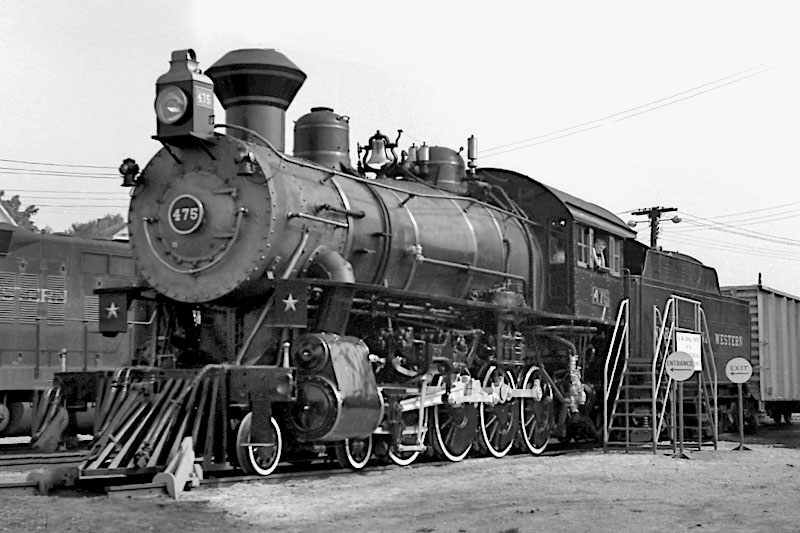
Norfolk & Western #475
Bristol, Va / Sep 1960 / JCH
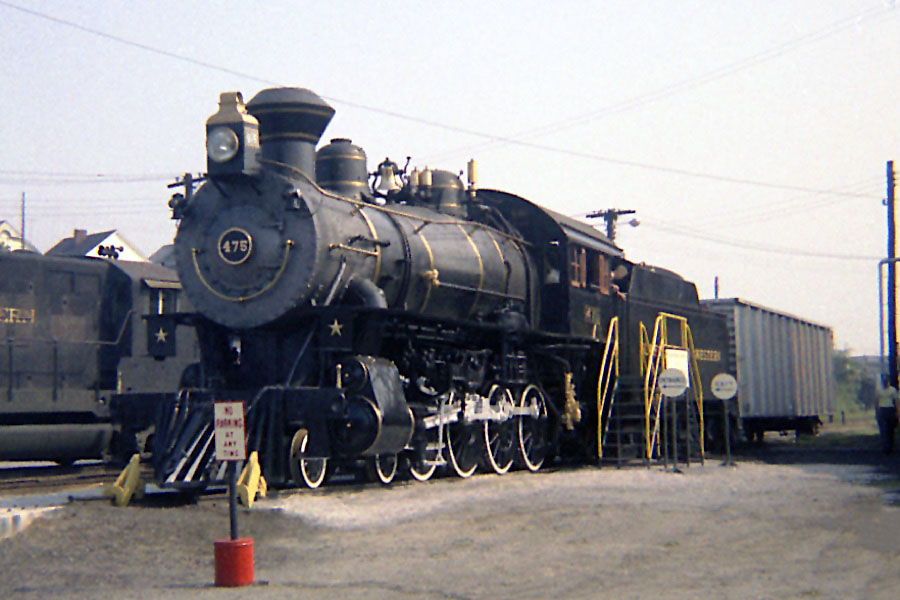
Bristol, Va / Sep 1960 / JCH
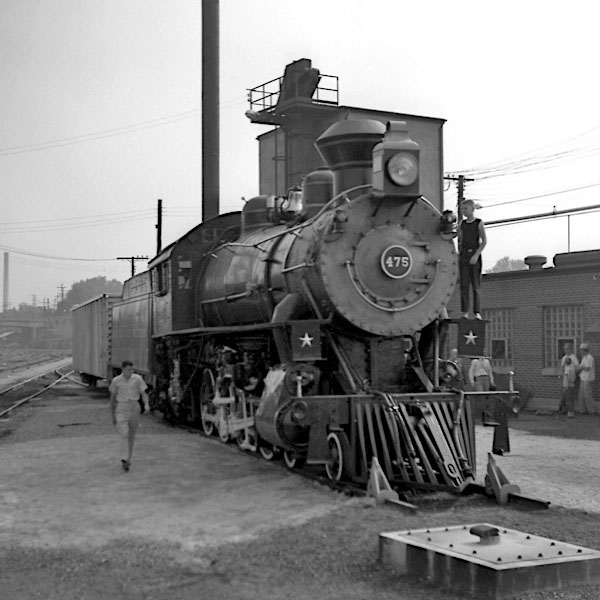
Bristol, Va / Sep 1960 / JCH
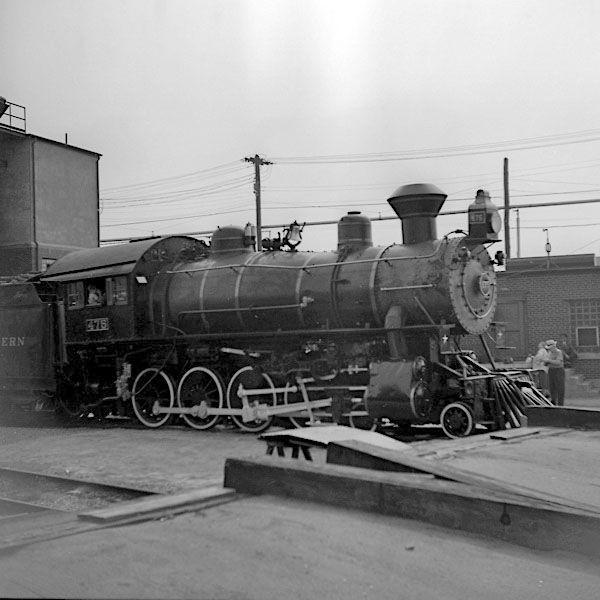
Bristol, Va / Sep 1960 / JCH
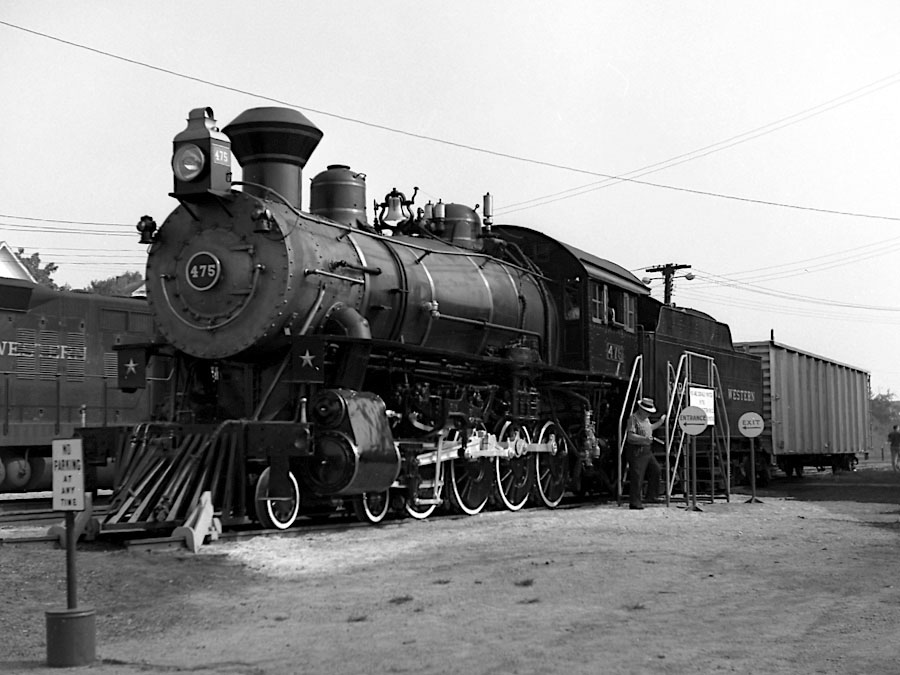
Bristol, Va / Sep 1960 / JCH
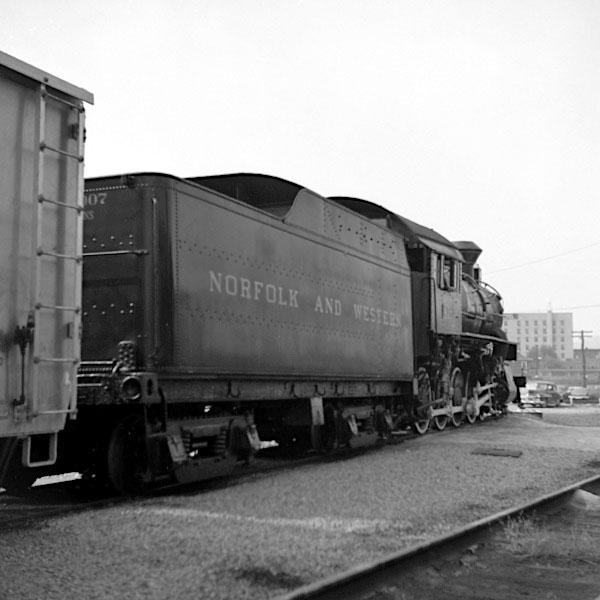
Bristol, Va / Sep 1960 / JCH
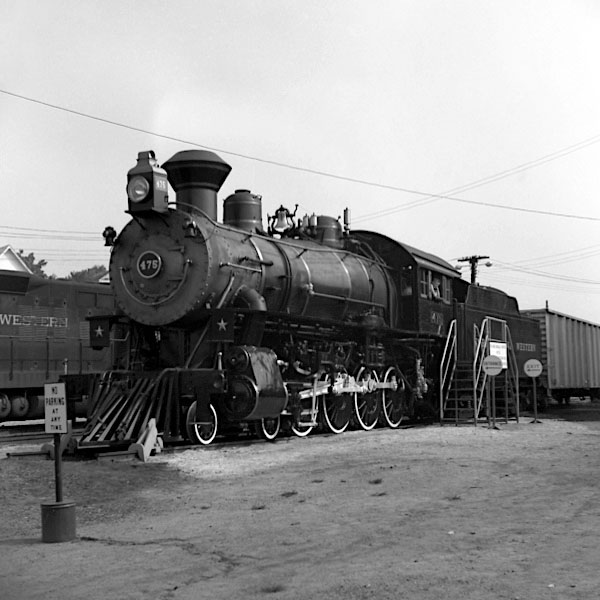
Bristol, Va / Sep 1960 / JCH
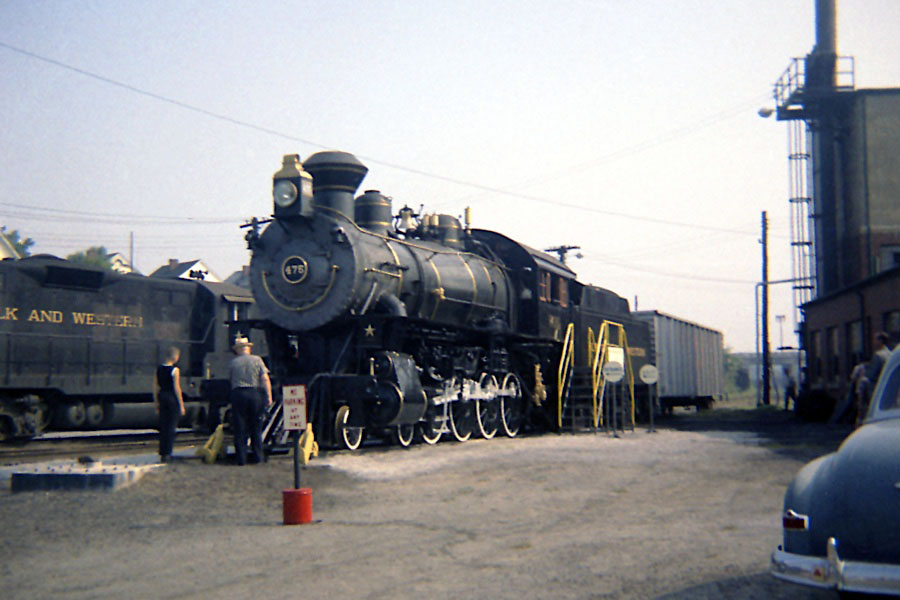
Bristol, Va / Sep 1960 / JCH

See also these related scrapbooks:
- 1960 National Railway Historical Society convention scrapbook in Preservation
- Norfolk & Western Railway fallen flag scrapbook in Mainlines
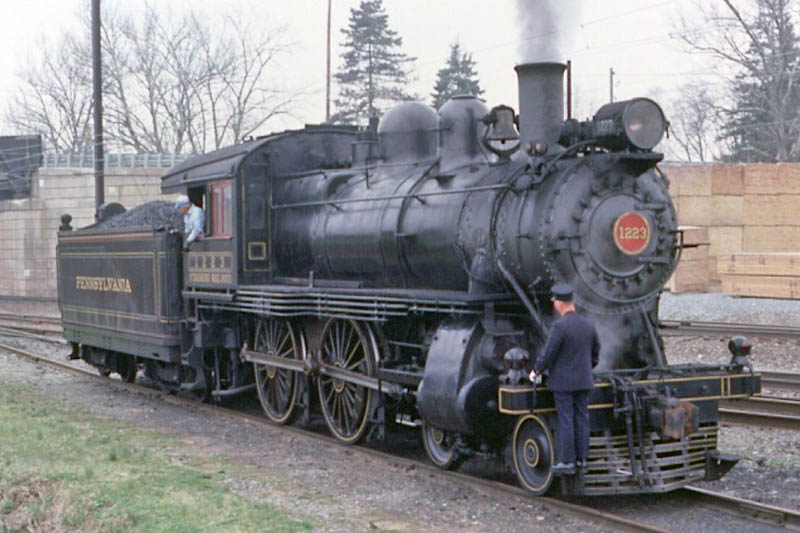
Pennsylvania #1223
Paradise, Pa / Apr 1988 / Bob Kise


Pennsylvania #1223
to Strasburg Rail Road
to Railroad Museum of Pennsylvania
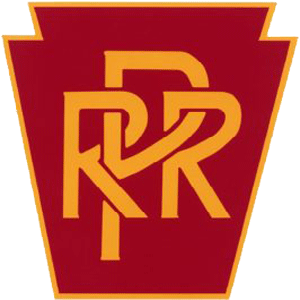

Strasburg, Pa / Aug 1971 / JCH

There is little doubt that number 1223 is the most photographed steam locomotive in the country today. Coupled to the head end of three or four of the Strasburg's carefully restored open platform coaches, the 1223, resplendent in its gold trim, is the very epitome of turn-of-the-century railroading. It is the last remaining Pennsylvania Railroad 4-4-0, of which more than 400 were built between 1895 and 1910 at the railroad's Altoona shops. By the beginning of World War II, only three remained on the motive power roster, and in 1951 the railroad's officials decided to preserve the 1223.
The Pennsylvania should be applauded for its foresight in saving this locomotive; for no engine in operation today is more representative of the era of steam propulsion. When these engines were outshopped they were assigned to the railroad's best and fastest trains, limiteds like the BROADWAY and the mile-a-minute boardwalk flyers between Camden and Atlantic City. With the advent of longer trains and all-steel coaches, they were sent to the shops, fitted with smaller driving wheels and assigned to commuter and branch line service. Before being fitted with smaller drivers, the 1223 was capable of speeds well in excess of 100 miles an hour.
William M. Moedinger - The Road to Paradise - 1971
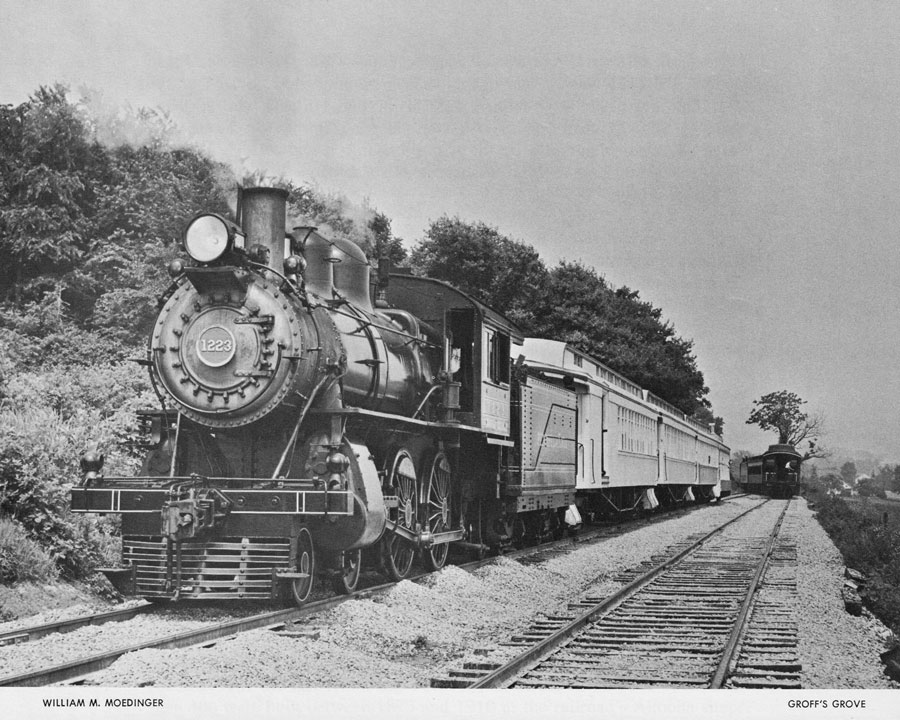
from The Road to Paradise
- William Moedinger / collection
Diesel Motive Power

Strasburg #1
Strasburg, Pa / Jun 2008 / Vern Wigfield


Strasburg #1
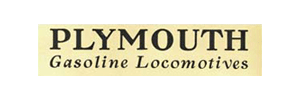

Strasburg, Pa / Jul 2020 / RWH
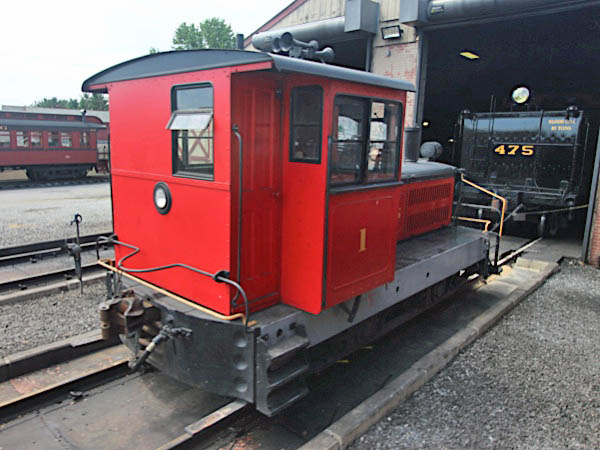
Strasburg, Pa / Jul 2024 / Gragg Robinson
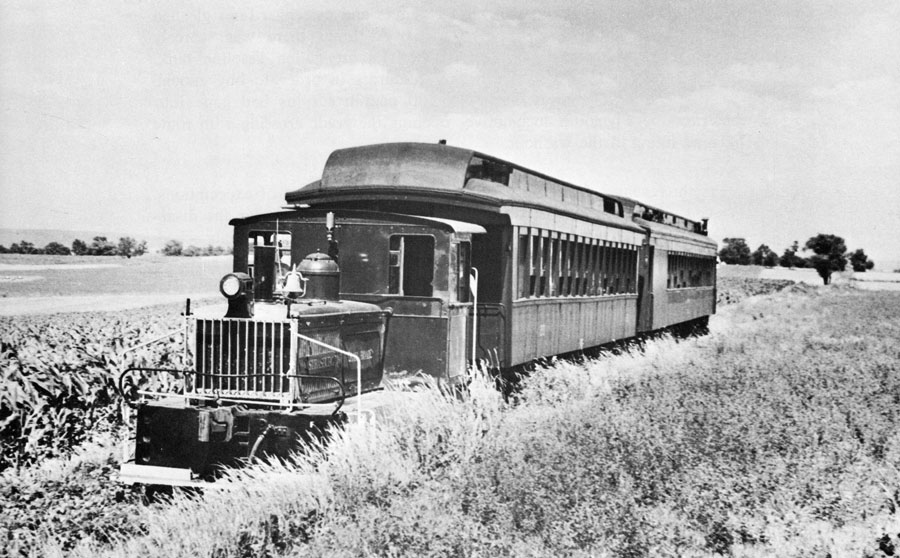
from The Road to Paradise
- William Moedinger / 1959 photo / collection
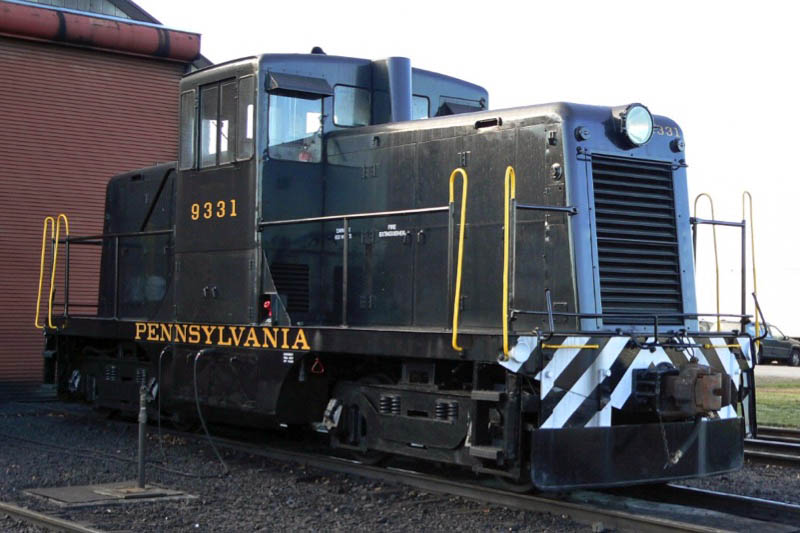
Strasburg #33
Strasburg, Pa / Dec 2006 / Joe Scherbenco


Strasburg #33
to Strasburg Rail Road #33
to Walkersville Southern Railroad
privately owned

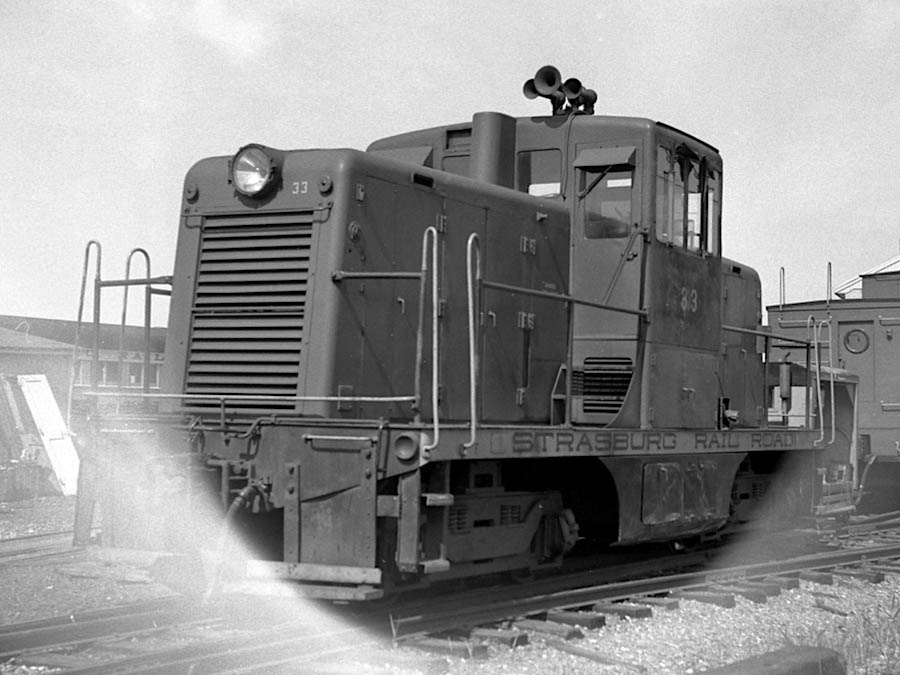
Strasburg, Pa / Aug 1971 / JCH
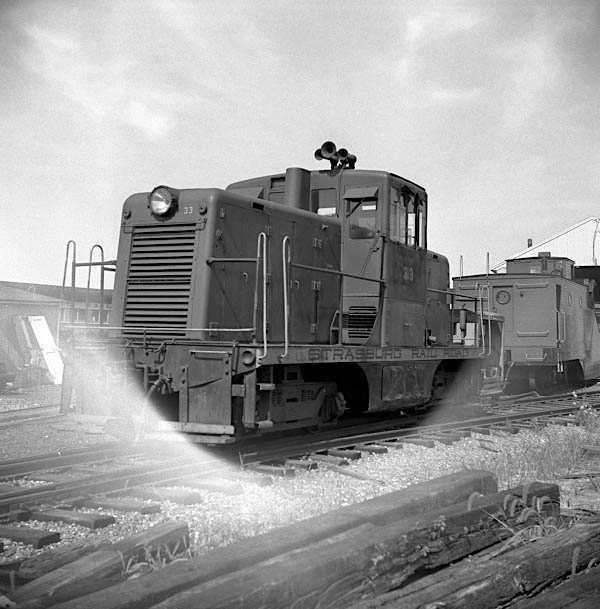
Aug 1971 / JCH

See also our Walkersville Southern Railroad scrapbook in Preservation

Strasburg #8618
Strasburg, Pa / May 2010 / Tim Darnell


Strasburg #8618
to Conrail #8618
to Larry's Truck & Electric
to Lewisburg & Buffalo Creek #1500
to Strasburg Rail Road #8618

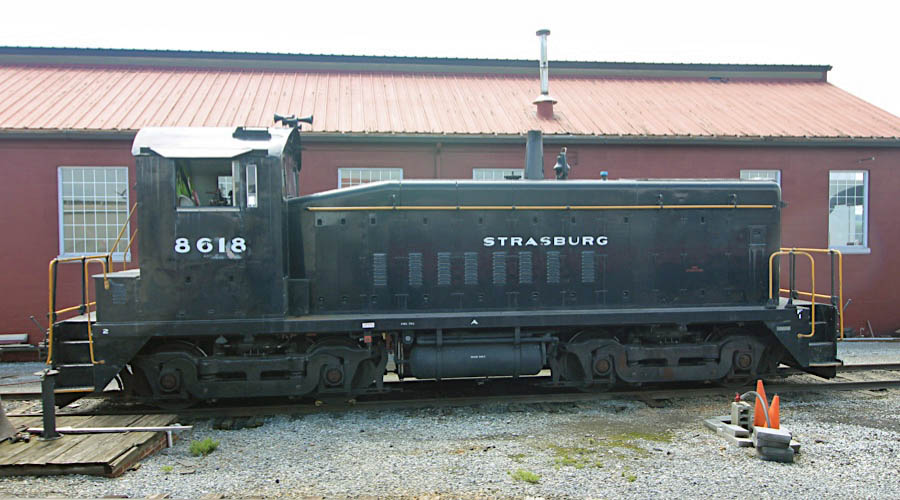
Strasburg, Pa / Jul 2020 / RWH
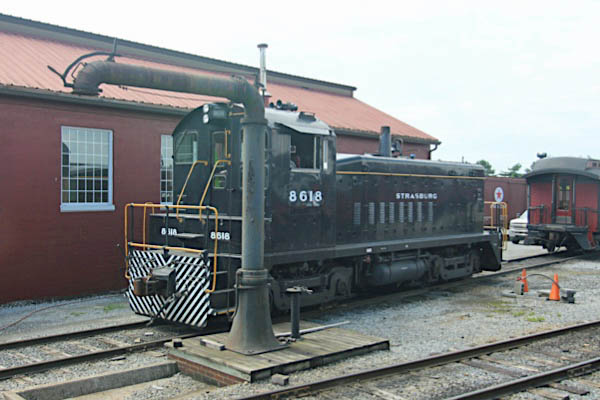
Strasburg, Pa / Jul 2020 / RWH
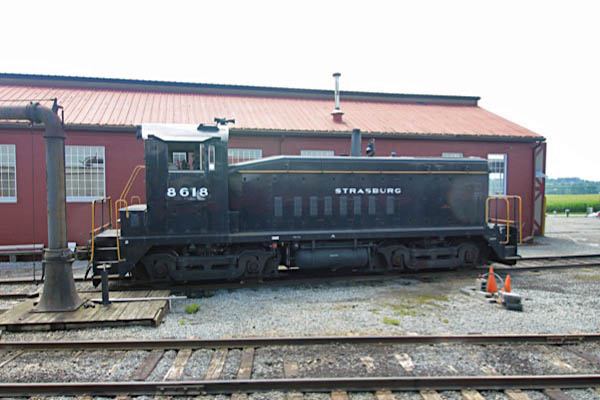
Strasburg, Pa / Jul 2020 / RWH

No. 8618 is often used as Strasburg freight locomotive hauling freight between the Leaman Place Junction and East Strasburg. Built in 1952 for the New York Central Railroad, No. 8618 is one of a few internal combustion locomotives on Strasburg's esteemed roster of historic steam locomotives. Strasburg Rail Road's freight department could not service the many local customers it does without the consistent and steady work of No. 8618. After spending decades on the New York Central, No. 8618 came to the Strasburg Rail Road in 2009.

Strasburg, Pa / Jul 2020 / RWH
 All time Strasburg Rail Road steam locomotive roster
All time Strasburg Rail Road steam locomotive roster
